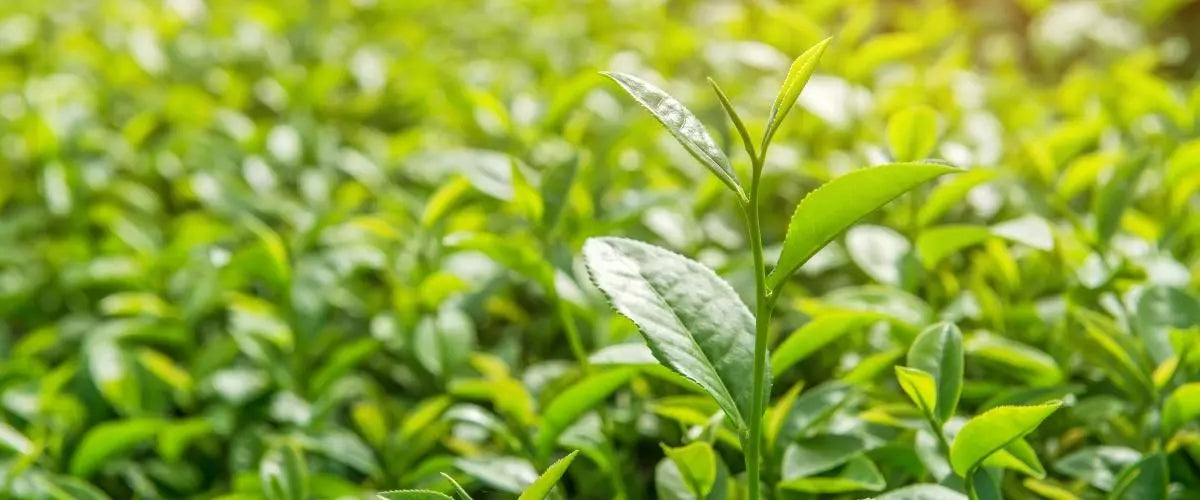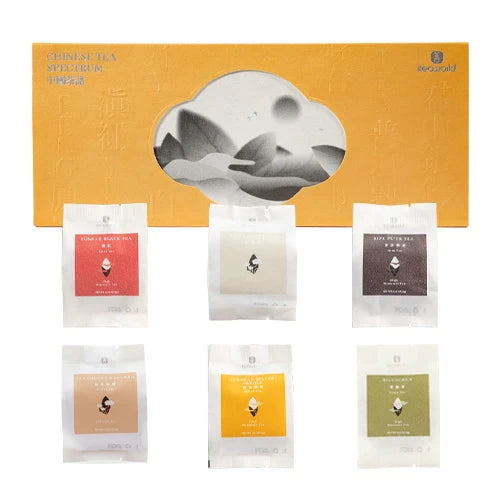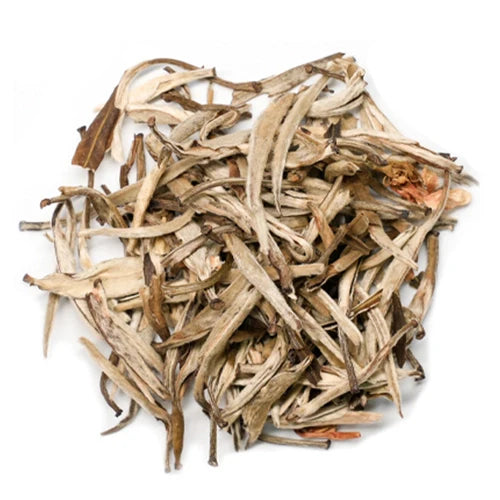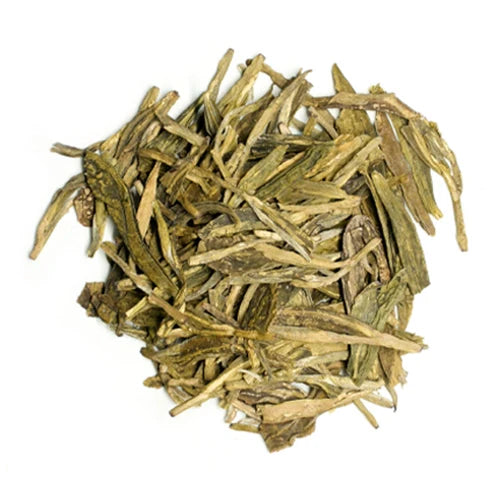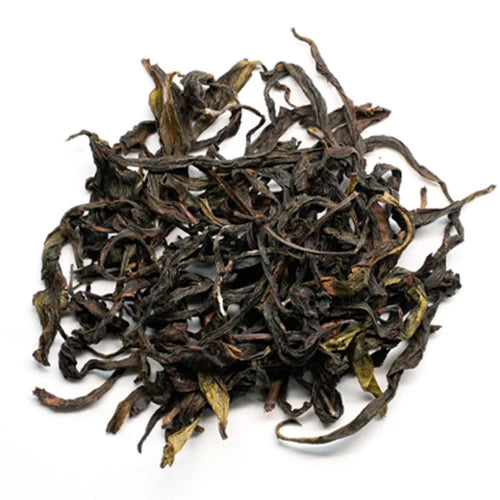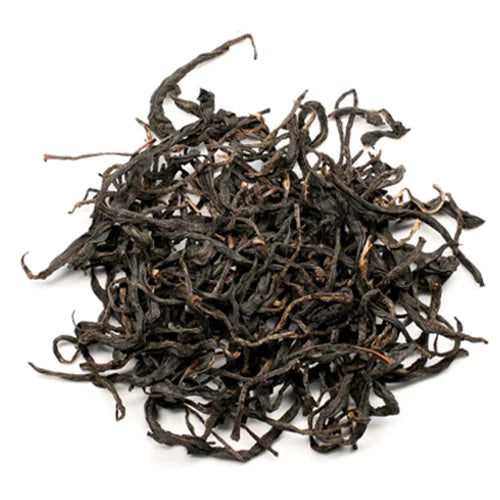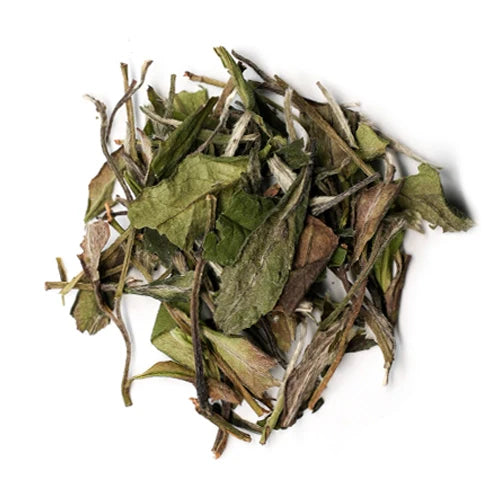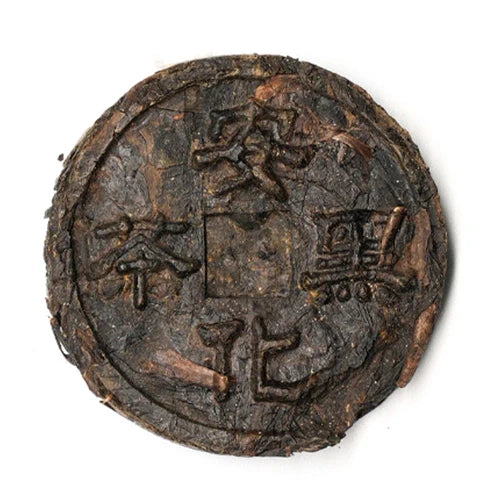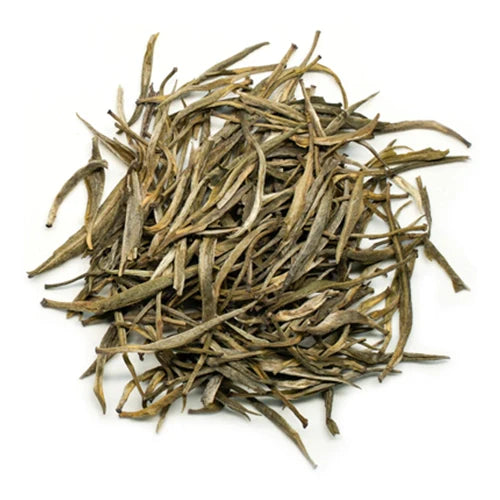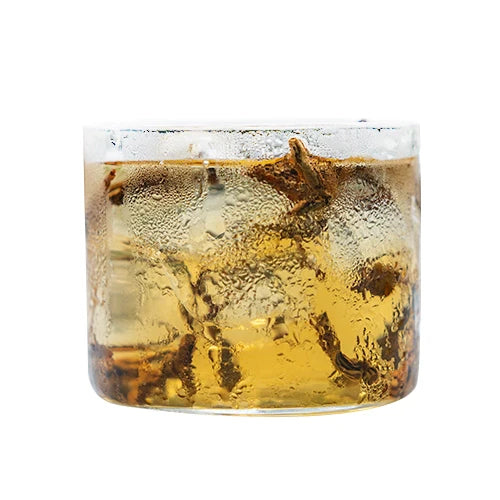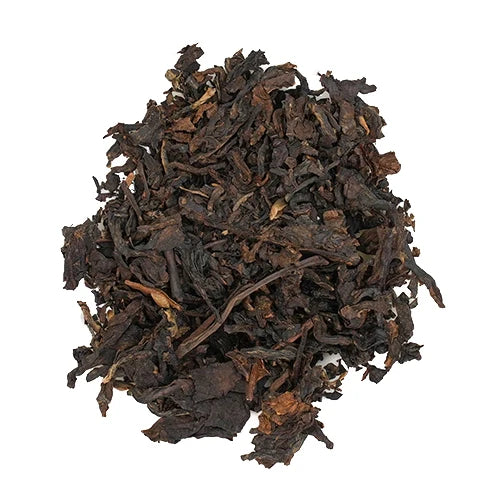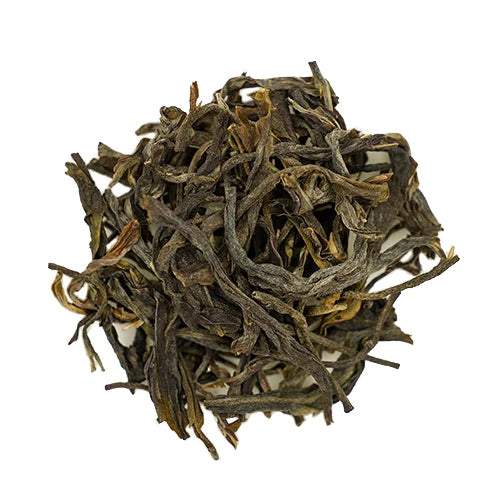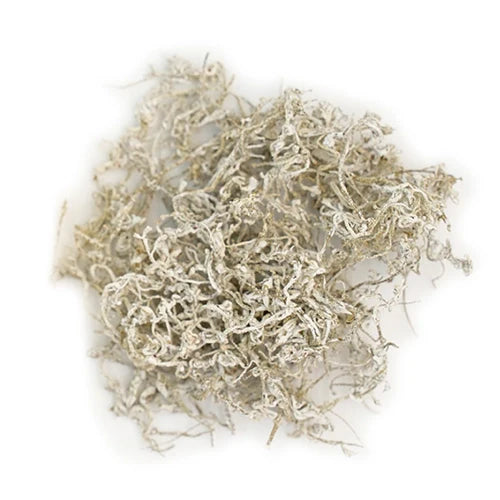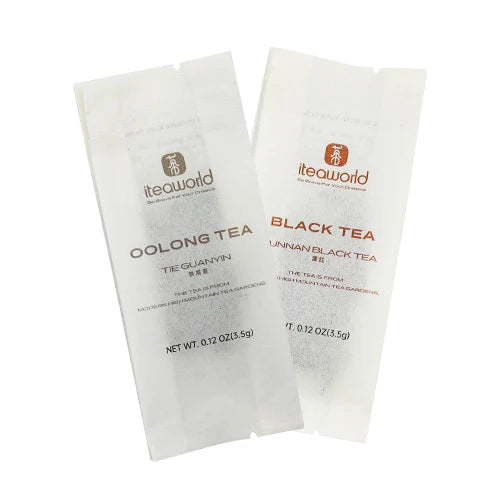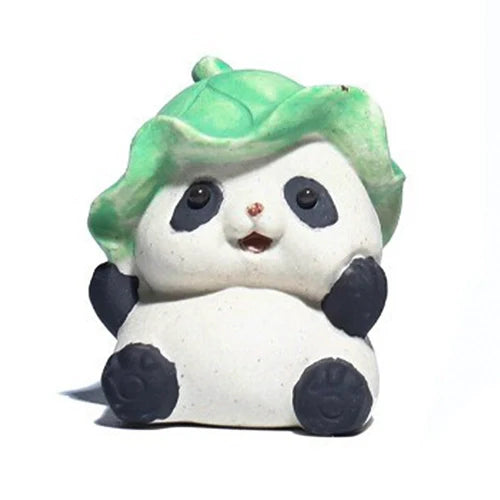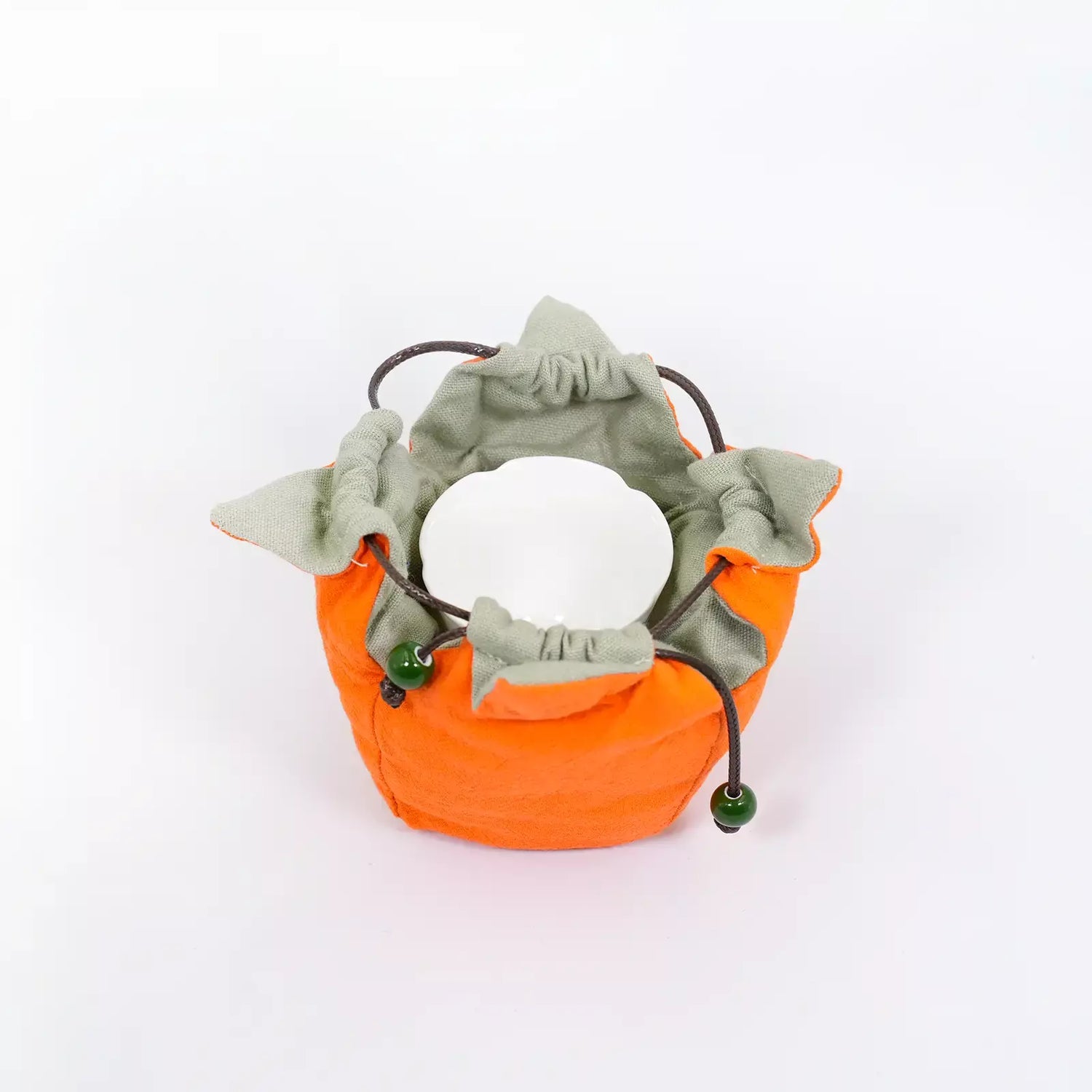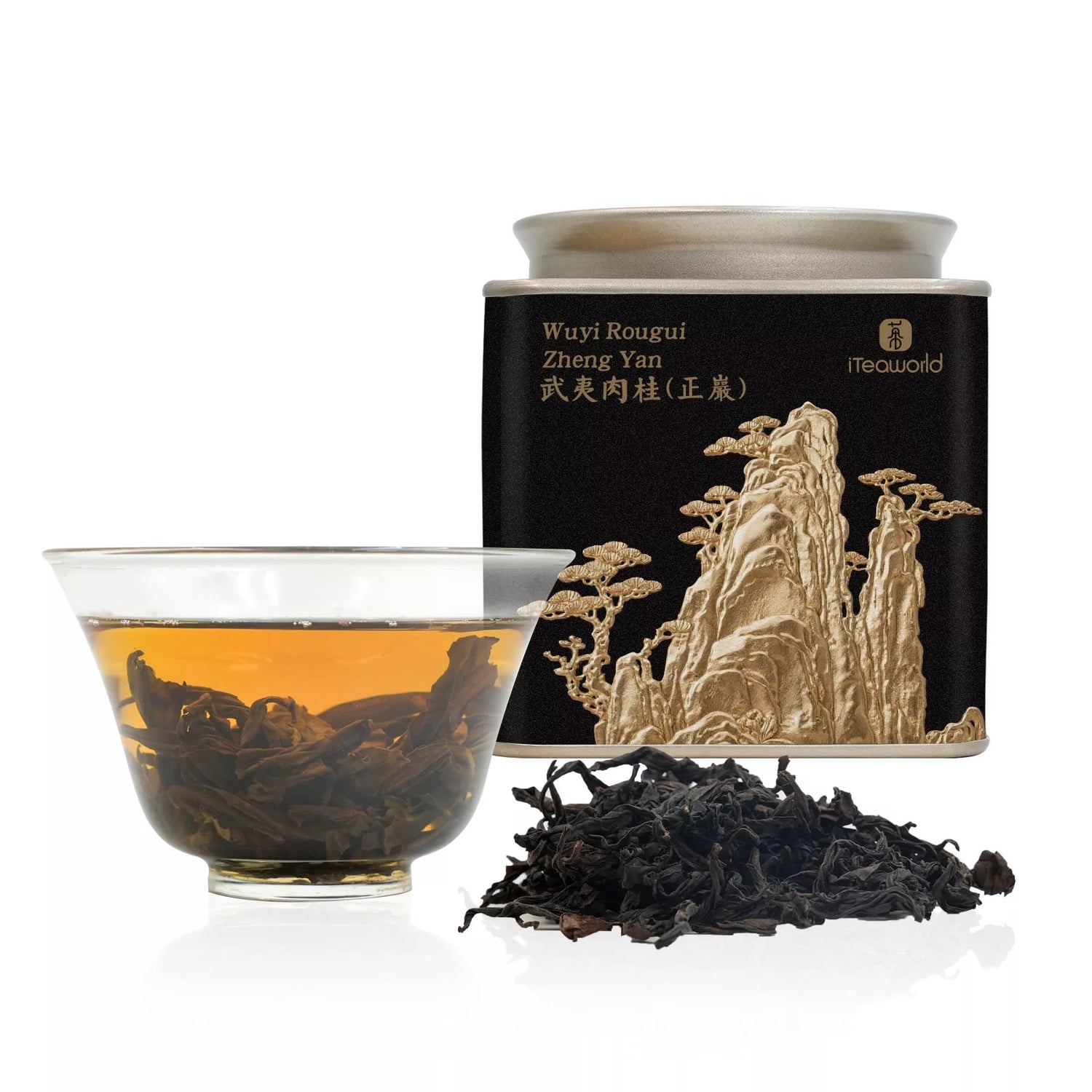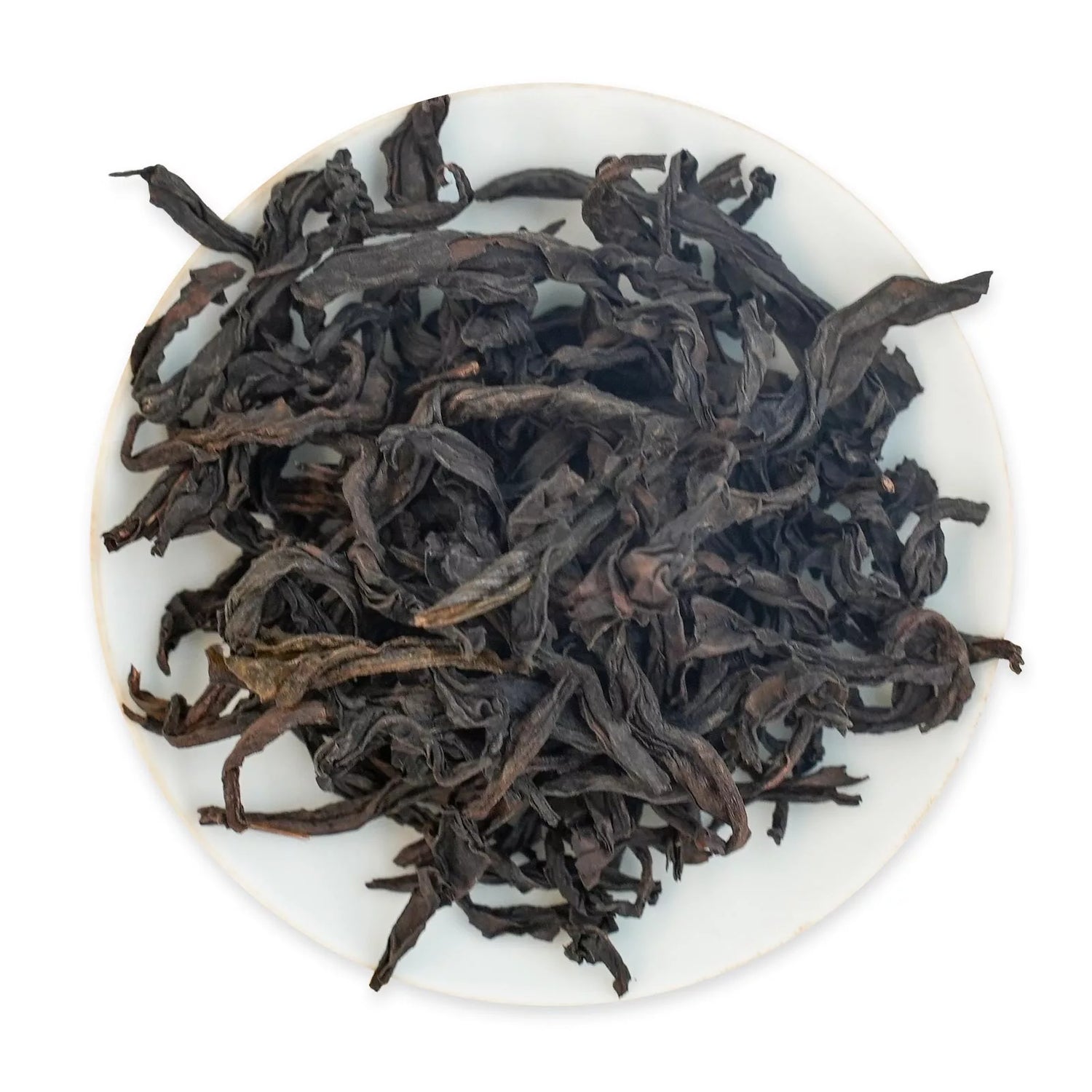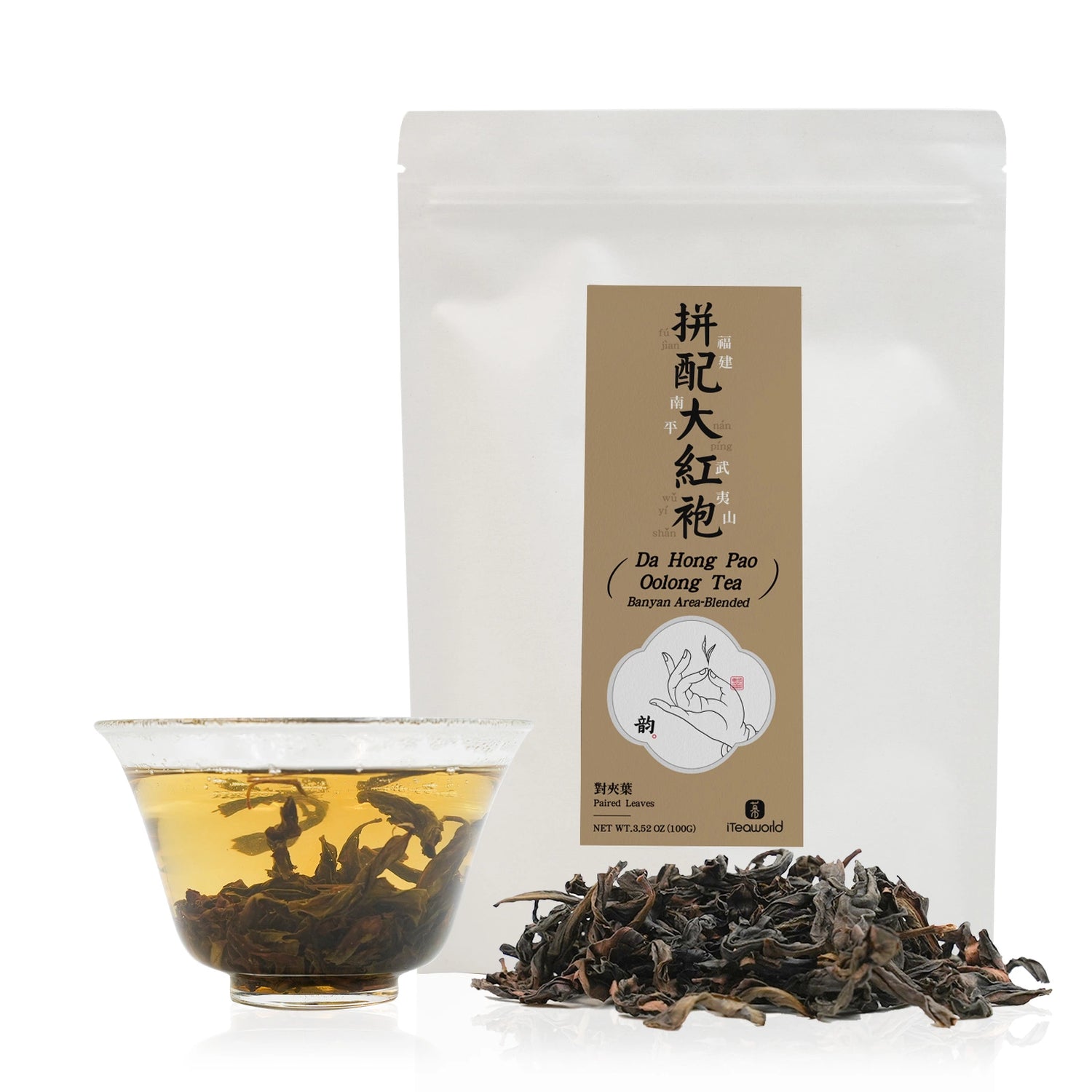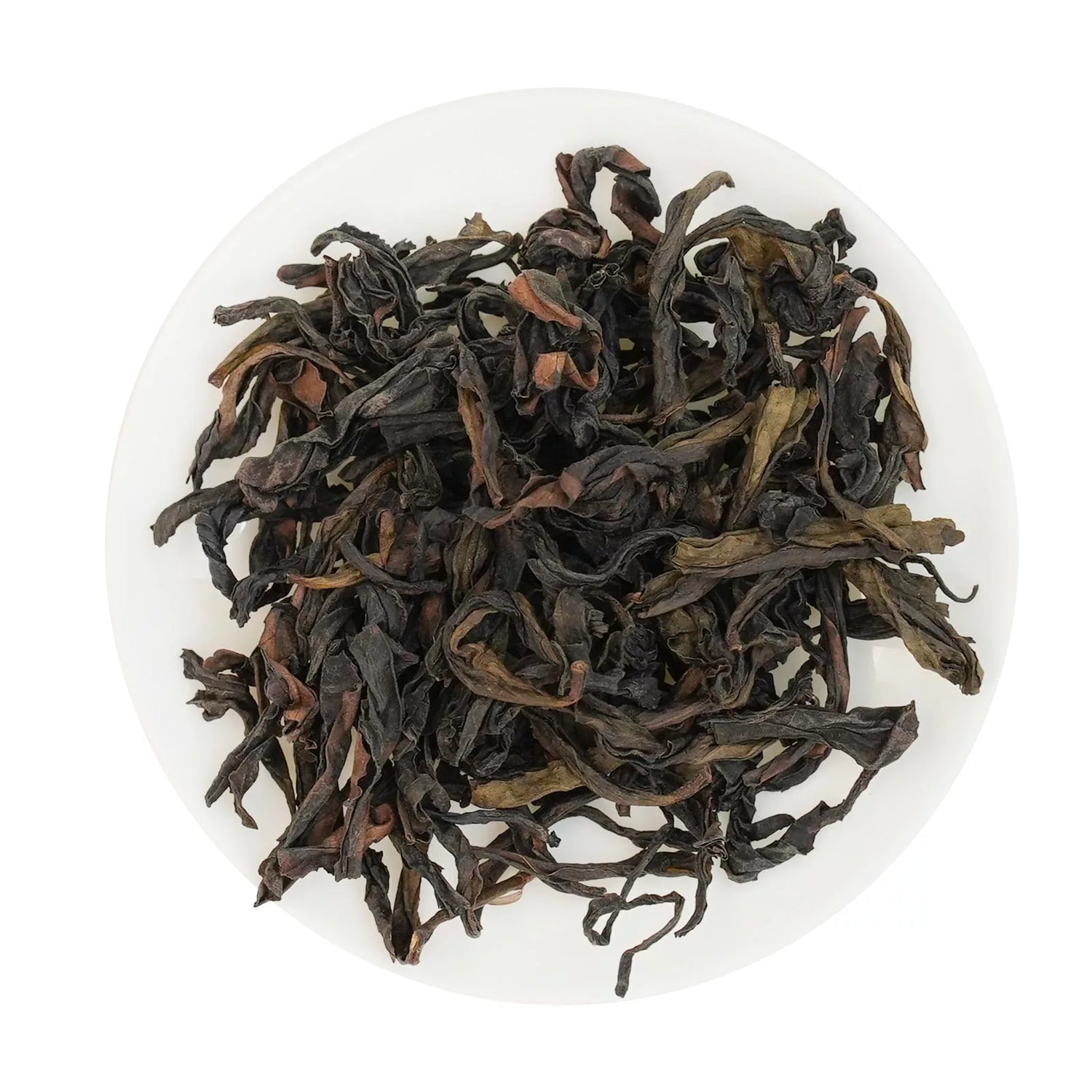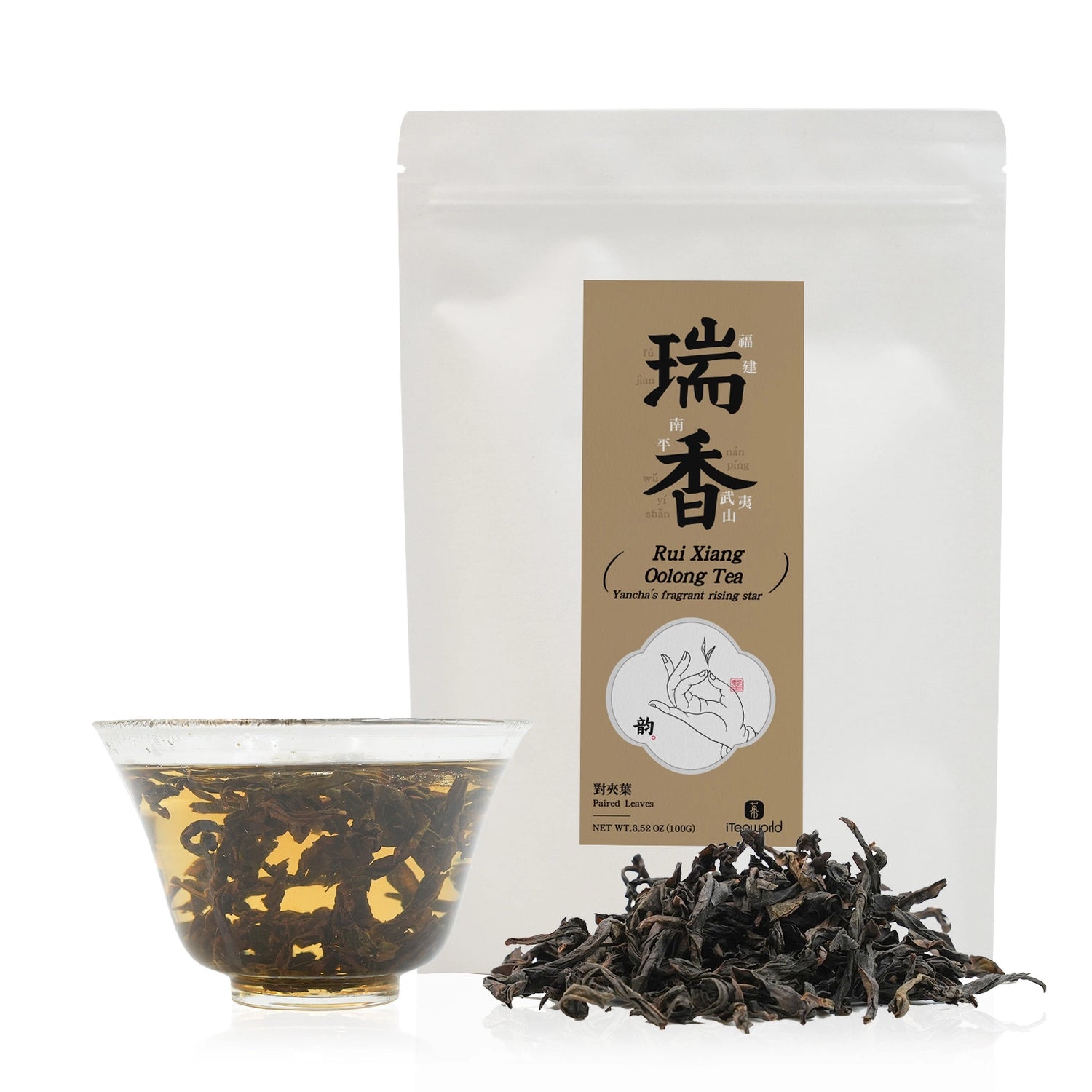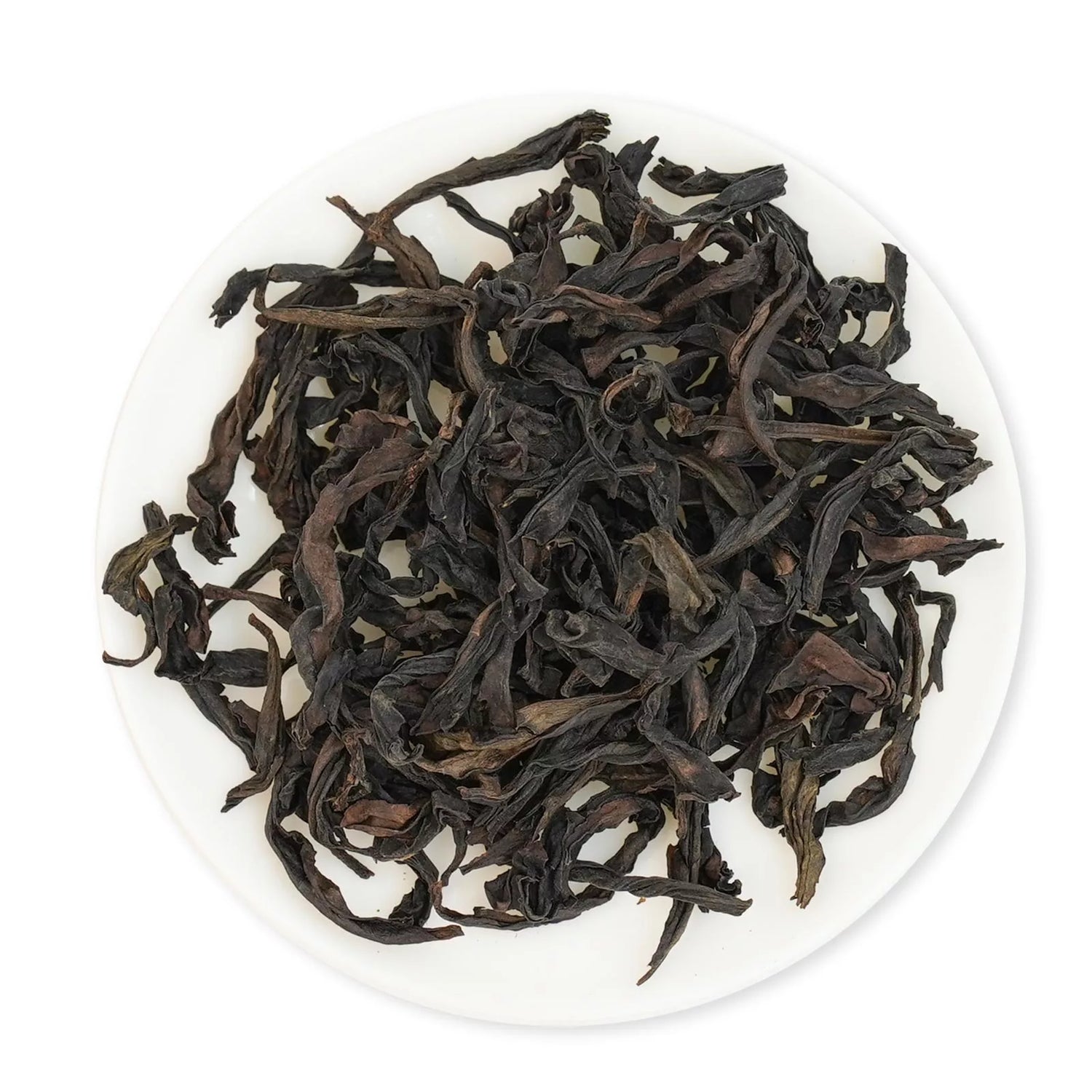Сортировать по:
204 продуктов
204 продуктов
These bag are specially designed to protect your teaware. Each bag is lined with soft padding that provides full cushioning and protection for teapots and cups, preventing damage from accidental bumps during handling or storage.
These teaware bags are perfect for both home storage and travel, offering reliable protection for your favorite teaware wherever you go.
Sizes:
Persimmon Cup Bag – Orange: 6 cm (L) × 5.5 cm (W) × 8 cm (H)
Wuyi Rougui is one of the most famous varieties of Wuyi Rock Tea, named for its sharp, cinnamon-like aroma.
This Rougui comes from Foguoyan, one of the “Ninety-Nine Famous Rocks” of Wuyi Mountain. Foguoyan is a Zhengyan producing area known for its excellent cost-performance ratio: it offers quality comparable to core Zhengyan teas at a more accessible price. The mineral-rich soil, ample sunlight, and year-round mist create a unique microclimate ideal for tea growth.
The Rougui from Foguoyan features a pronounced rock character with a distinct cinnamon aroma, layered with fruit and floral notes. The liquor is rich, full-bodied, and lingering. Offering core-Zhengyan quality at a better price, this Rougui is perfect for tea enthusiasts looking to explore Wuyi Rock Tea in depth.
Origin: Foguoyan, Xingcun Town, Wuyishan City, Fujian Province, China
Category: Zheng Yan (core rock area)
Soil: Gravel soil
Variety: Wuyi Rou Gui
Producer: Chen Hui
Harvest Time: November 2024
Shelf Life: 36 months
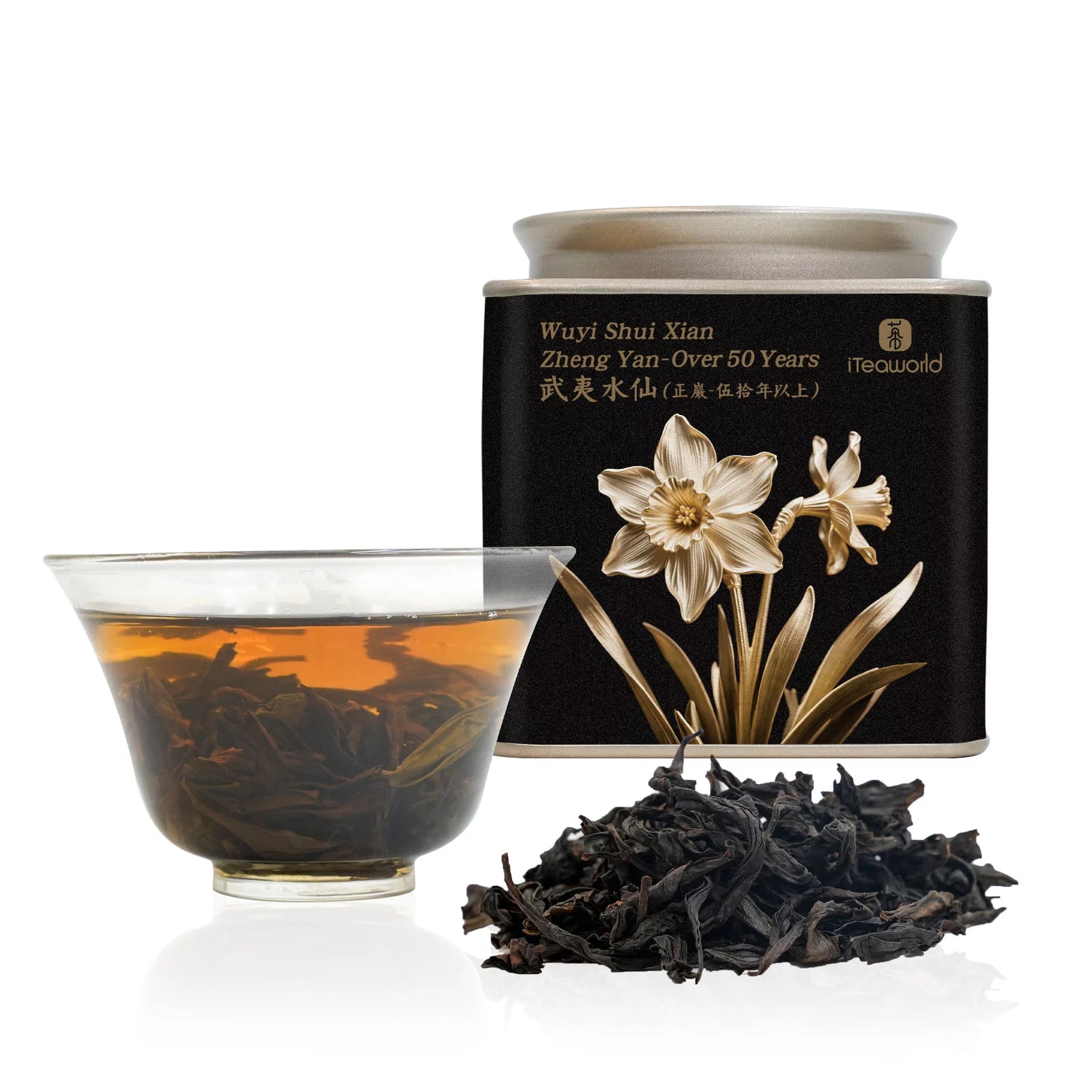
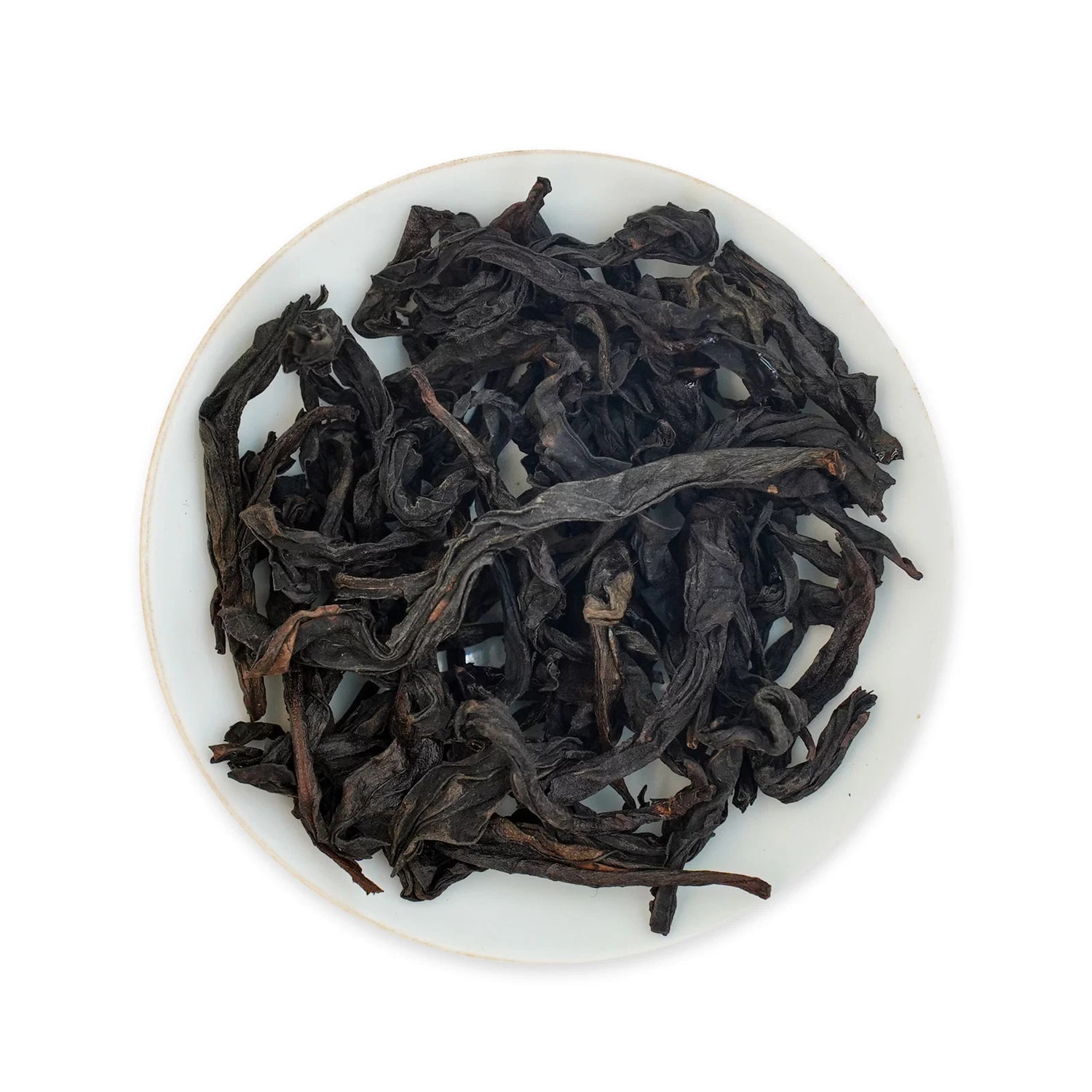
Top-Grade Zheng Yan Wuyi Shui Xian (Over 50 Years Old)
Top-Grade Zheng Yan Wuyi Shui Xian (Over 50 Years Old)
Wuyi Shui Xian is one of the flagship varieties of Wuyi Rock Tea. Together with Rou Gui, it is praised in the saying: “For mellowness, none surpasses Shui Xian; for fragrance, none surpasses Rou Gui.” It was introduced to Wuyi Mountain from Jianyang during the Qing Dynasty.
For Shui Xian, tree age is a defining factor. As the tea trees grow older, the liquor becomes more mellow and rich, bitterness and astringency diminish, and the flavor layers become increasingly complex.
This particular Shui Xian is grown at Yunü Peak, one of the famous Thirty-Six Peaks of Wuyi Mountain, within the Zheng Yan (core rock) area, the most prized origin for Wuyi Rock Tea. Crafted from tea trees over 50 years old, it carries a distinctive woody fragrance, combined with bamboo leaf (zongye) aroma and the characteristic “Cong Wei” (old tree flavor). The mineral-rich Yan Yun (rock rhyme) is especially pronounced. Compared with younger bushes, the liquor is thicker, more full-bodied, and textured, making it an ideal choice for tea lovers seeking to deepen their exploration of Wuyi Rock Tea.
Origin: Yunü Peak, Xingcun Town, Wuyishan City, Fujian Province, China
Tree Age: Over 50 years
Category: Zheng Yan (core rock area)
Soil: Gravel soil
Variety: Wuyi Shui Xian
Producer: Chen Hui
Harvest Time: November 2024
Storage Life: 36 months
Da Hong Pao is the most representative tea among Wuyi Rock Teas. Due to its high reputation, many people even refer to all Wuyi Rock Teas as Da Hong Pao. The original mother trees of Da Hong Pao are located at Jiulongke in Wuyi Mountain, and they are now strictly protected from harvesting. To recreate the unique flavor of Da Hong Pao, high-quality Wuyi Rock Teas such as Rou Gui, Shui Xian, along with pure-bred Da Hong Pao, are blended to achieve an outstanding balance of aroma, liquor color, and taste, making it a favorite among tea lovers both in China and abroad.
This Da Hong Pao is blended with mid-mountain (Ban Yan) Wuyi Rock Tea materials in a specific ratio. It has a distinctive mineral sensation (known as Yan Yun, the “rock rhyme”), with a hint of roasted fragrance. The taste is mellow and full-bodied, with every flavor harmoniously integrated. It highlights the classic character of “rock bone and floral fragrance,” offering rich layers—an excellent choice for further exploring the world of Wuyi Rock Tea.
Origin: Jingshui Village, Xingcun Town, Wuyishan City, Fujian Province, China
Altitude: 400–600 m (Ban Yan, mid-mountain)
Soil: Gravel soil
Producer: Chen Hui
Harvest Time: November 2024
Storage Life: 36 months
Brewing Guidelines
Water Temp: 100°C (212°F)
Brewware: Gaiwan, Yixing Clay Teapot
Tea-to-Water Ratio: 5-7g per 100ml
1–3 infusions: 8-15 sec
Later infusions: Add 5–10 sec
Total brews: 10-12 times
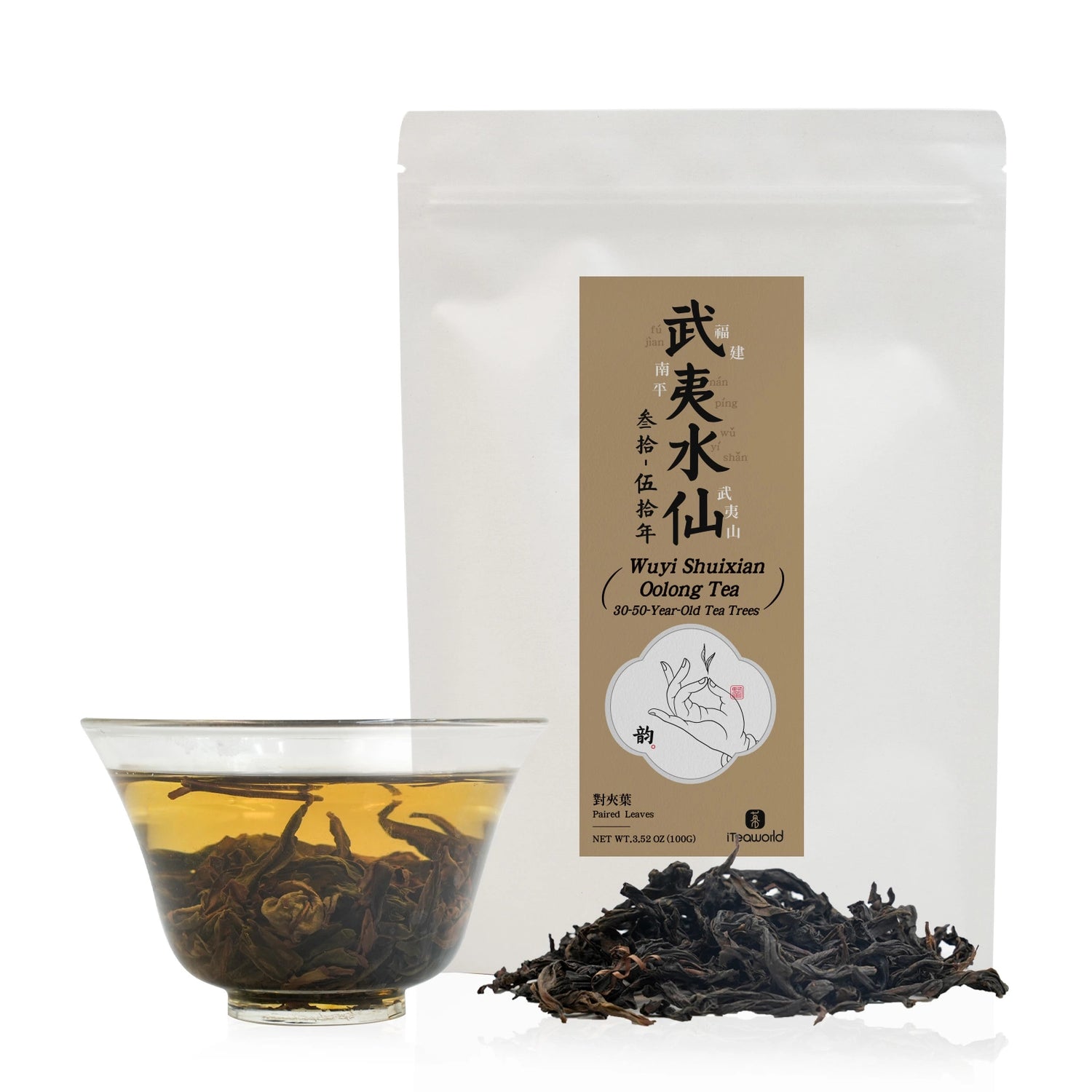
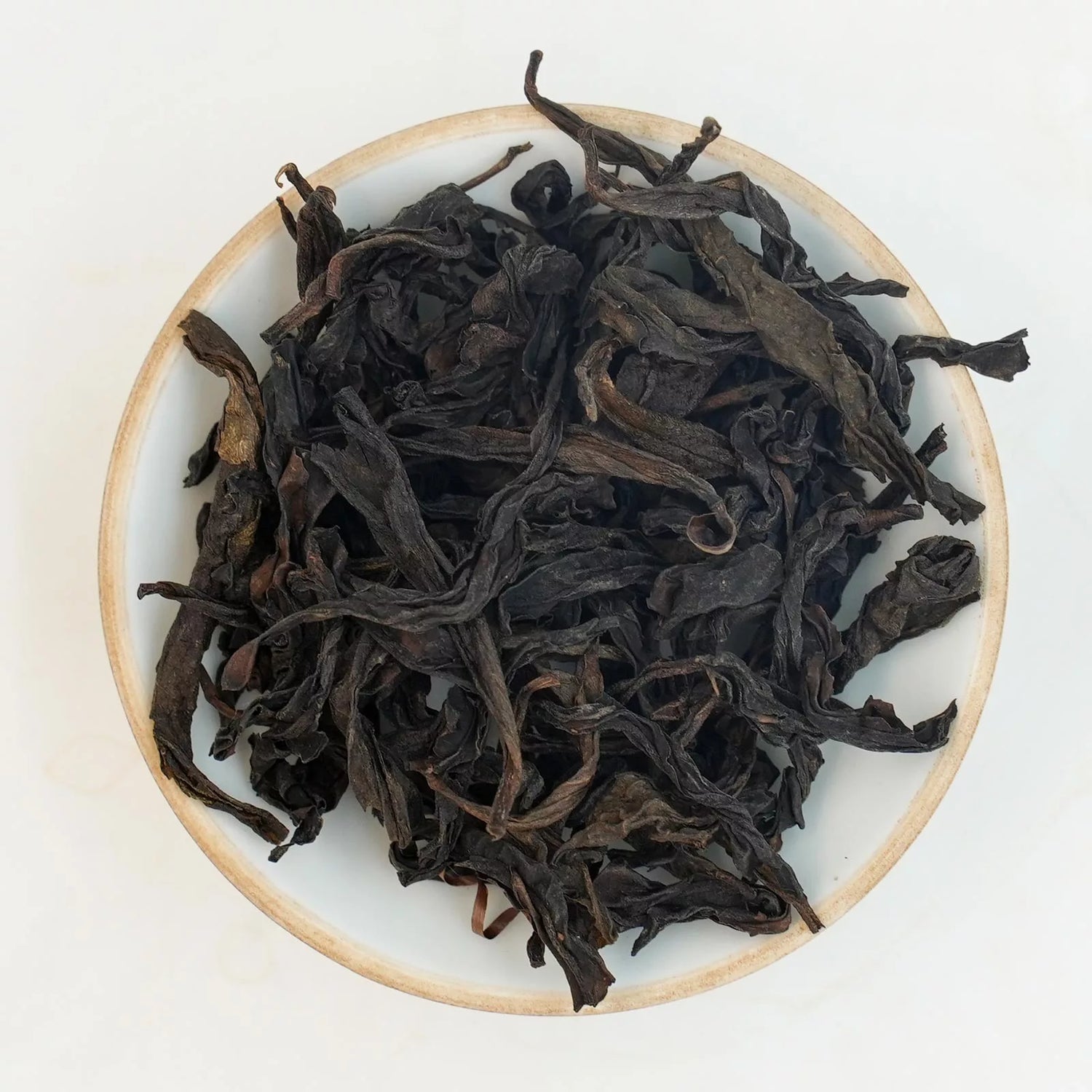
Уи Шуй Сянь (Высокая гора, Старый Буш) Улун Оэа для Daily 2025
Уи Шуй Сянь (Высокая гора, Старый Буш) Улун Оэа для Daily 2025
Уи Шуй Сянь (Высокая гора, Старый Буш) | 武夷高山老丛水仙
Уи Шуйсянь — один из знаковых сортов уишаньского чая. Он сочетает в себе насыщенный цветочный аромат и густой, бархатистый настой. Возникший во времена династии Цин, Шуйсянь — единственный полудревовидный сорт чая Уи. Старые кусты (лао цун), как правило, старше 50 лет, дают более глубокие и мягкие настои с прозрачным, как лес, древесным ароматом и характерным ароматом «цун». По сравнению с более молодыми кустами, старые кусты содержат больше аминокислот и меньше горечи, что делает их более стойкими при заваривании и подходит для средней обжарки на углях.
Этот чай выращивается в деревне Байчжан в городке Сяоцяо , недалеко от живописного центра Уишань. Деревня Байчжан, известная тысячелетней историей чайного производства и подношений императору, расположена на высоте 730 метров над уровнем моря в юго-восточной части гор Уи. Терруар — постоянный туман, щебнистая почва и богатый минералами состав — создаёт оптимальные условия для получения насыщенного, многослойного чая по более доступной цене.
Мы сравнили несколько чаёв Шуйсянь из центра Уи и выбрали этот высокогорный сорт со старых кустов за его зрелый вкус, подлинное мастерство изготовления и выдающуюся ценность . Этот чай, напоминающий по вкусу 40–50-летний Шуйсянь, подходит не только новичкам, но и опытным ценителям для ежедневного хранения и долгого наслаждения .
Происхождение: деревня Байчжан, посёлок Сяоцяо, город Цзяноу, провинция Фуцзянь, Китай | Высота: 730 м
Обжарка: традиционная обжарка на древесном угле
Чайник: Чжэн Сюнцин, опытный мастер чайного дела из многопоколенческой чайной семьи
Сорт: Шуй Сянь (кусты возрастом около 50 лет)
Урожай: весна 2025 г.
Окисление: среднее (40–50%)
Степень обжарки: средняя (на углях)
Подходит для: ежедневного употребления, любителей мягкого вкуса, любителей выдержанного кустового улуна.
Срок годности и хранение
Срок годности: 5+ лет (выдержка возможна, но не обязательна)
Хранение: хранить в герметичном контейнере в прохладном, сухом месте без посторонних запахов. Хранить в холодильнике не требуется. При длительном хранении избегать частого контакта с воздухом.
Руководство по пивоварению
-
Сосуд: фарфоровая гайвань или глиняный чайник
-
Вода: 5 г чая : 100 мл родниковой или фильтрованной воды | 100°C / 212°F
-
Замачивание:
-
Инфузии 1–3: 10–15 секунд
-
После этого добавляйте по 5–7 секунд на каждую инфузию.
-
Выход 8–10 настоев
-
Профиль вкуса
-
Аромат: поджаренная древесина, орхидея, тонкая выдержанная сладость
-
Вкус: мягкий и чистый, с мягкими цветочными и древесными нотами, а также нежным жареным послевкусием.
-
Ощущения во рту: Округлые и мягкие, с легкой терпкостью
-
Послевкусие: легкое и продолжительное, с успокаивающим теплом; «рок-рифма» (Янь Юнь) тонкая.
Лучше всего наслаждаться, когда...
-
Вы предпочитаете более мягкий и доступный Уишаньский улун
-
Вам нужен ежедневный чай с глубиной старых кустов
-
Вы исследуете не-Чжэнъяньские чаи с высокой ценностью и честным мастерством
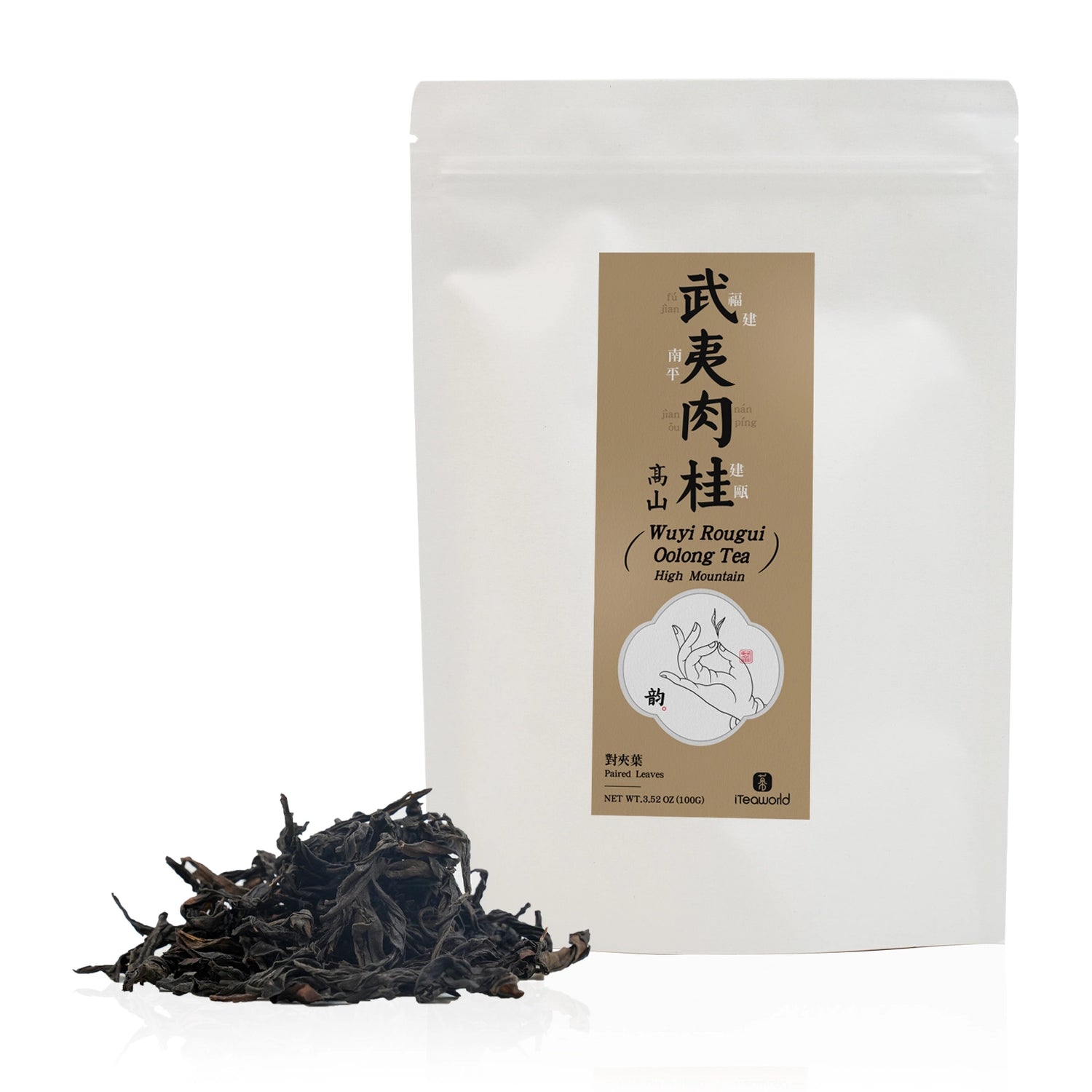

Улун Уи Жоу Гуй (высокогорный) – подходит для ежедневного употребления (весна 2025 г.)
Улун Уи Жоу Гуй (высокогорный) – подходит для ежедневного употребления (весна 2025 г.)
Уи Роу Гуй (Высокогорный Улун с корицей) | 武夷高山肉桂
Введение
«Жоу Гуй» — один из самых культовых улунов из Уи, известный своим ярким, пряным вкусом и фирменным ароматом с нотками корицы. Выращенный на каменистых, богатых минералами почвах и идеально обжаренный на углях, он дарит сложный, насыщенный вкус с многослойными нотами жареных специй, темных фруктов и влажной косточки.
Этот чай выращивается в деревне Байчжан в городке Сяоцяо, недалеко от живописного центра Уишань. Хотя Байчжан и не входит в официальную зону «Чжэн Янь», он может похвастаться более чем 1000-летней историей чаеварения и когда-то был производителем чая, приносившего императорские пожертвования. Расположенный на высоте 730 метров над уровнем моря высокогорный терруар — туманный климат, песчано-гравийные почвы и богатый минеральный состав — отвечает классическим критериям производства исключительного горного улуна по выдающейся цене.
После тщательной дегустации чая «Жоу Гуй» со всех лучших районов Уи мы выбрали этот чай за его исключительный баланс вкуса, структуры и цены, что делает его нашим лучшим выбором для ежедневного употребления «Жоу Гуй» с истинным характером.
Происхождение: деревня Байчжан, город Сяоцяо, город Цзяноу, Фуцзянь, Китай | 730 м
Обжарка: традиционная обжарка на древесном угле (метод брикетирования)
Чайник: Чжэн Сюнцин, опытный мастер чайного дела из многопоколенческой семьи, занимающейся чаеварением.
Культивар: Rou Gui
Урожай: 2025 (весна)
Окисление: средне-высокое (50–60%)
Обжарка: средне-сильная (обжарка на углях)
Срок годности: 3 года
Хранение: хранить в герметичном контейнере в прохладном, сухом месте без посторонних запахов. Для более длительного хранения или ускорения созревания избегайте частого контакта с воздухом.
Пивоварение
-
Сосуд: Фарфоровая гайвань / глиняный чайник
-
Вода: 100 мл родниковой/чистой воды : 5 г чая | 100°C / 212°F
-
Замачивание:
-
1–3-я инфузии: 10–15 секунд
-
Последующие заваривания: добавляйте 5–7 секунд на каждый раунд.
-
Подходит для 8–10 заварок
-
Вкус
-
Аромат: жареные специи, корица, богатый минералами
-
Вкус: насыщенный и согревающий, с нотами темных фруктов и минеральностью горных пород.
-
Ощущение во рту: густое, структурированное, с длительным резонансом
-
Послевкусие: Длительное «рок-рифмование» (岩韵) с пряным послевкусием
Случаи
-
Утренний фокус (стимулирующий и заземляющий)
-
Ясность после еды (уменьшает тяжесть)
-
Идеальный уишаньский улун на каждый день для любителей ярких вкусов
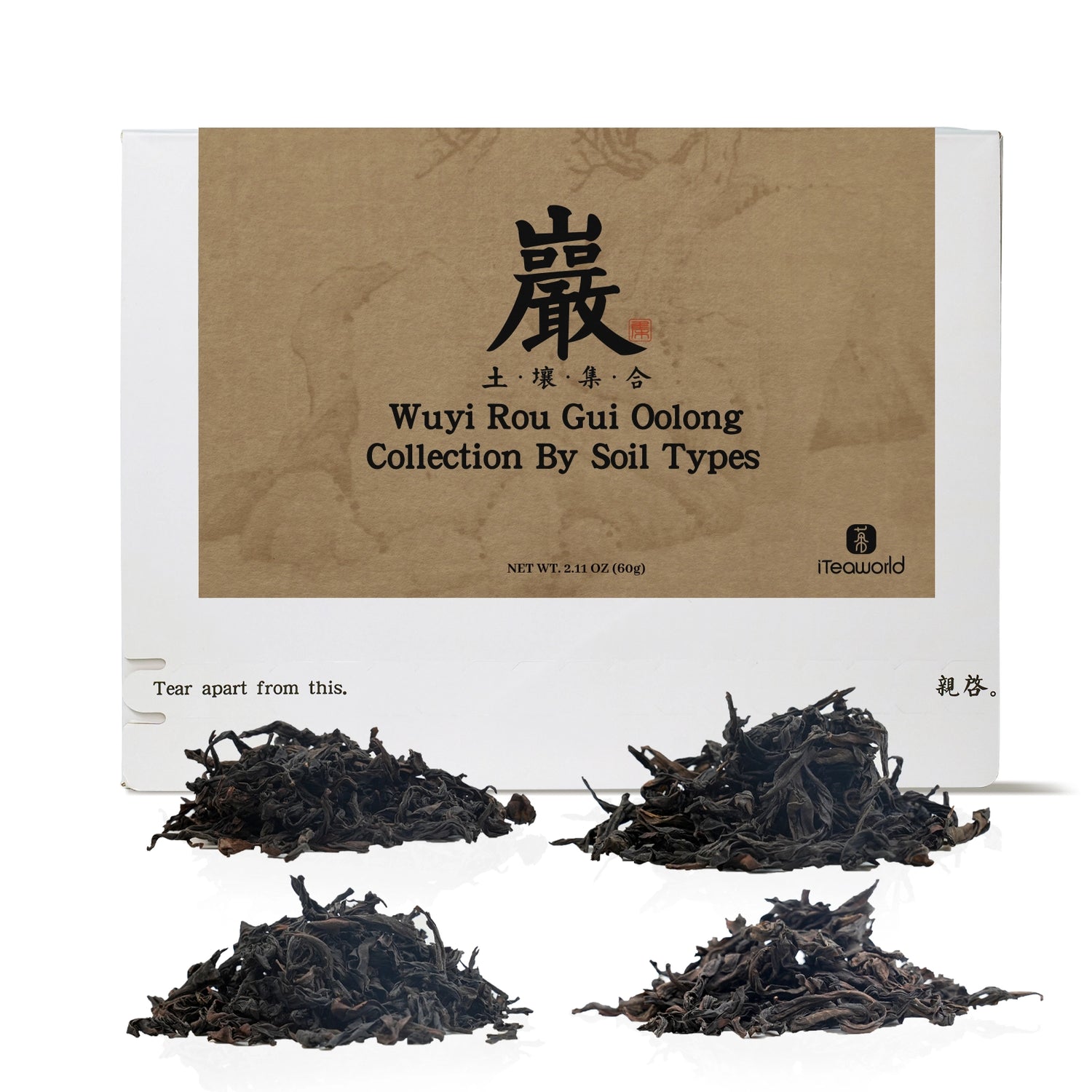
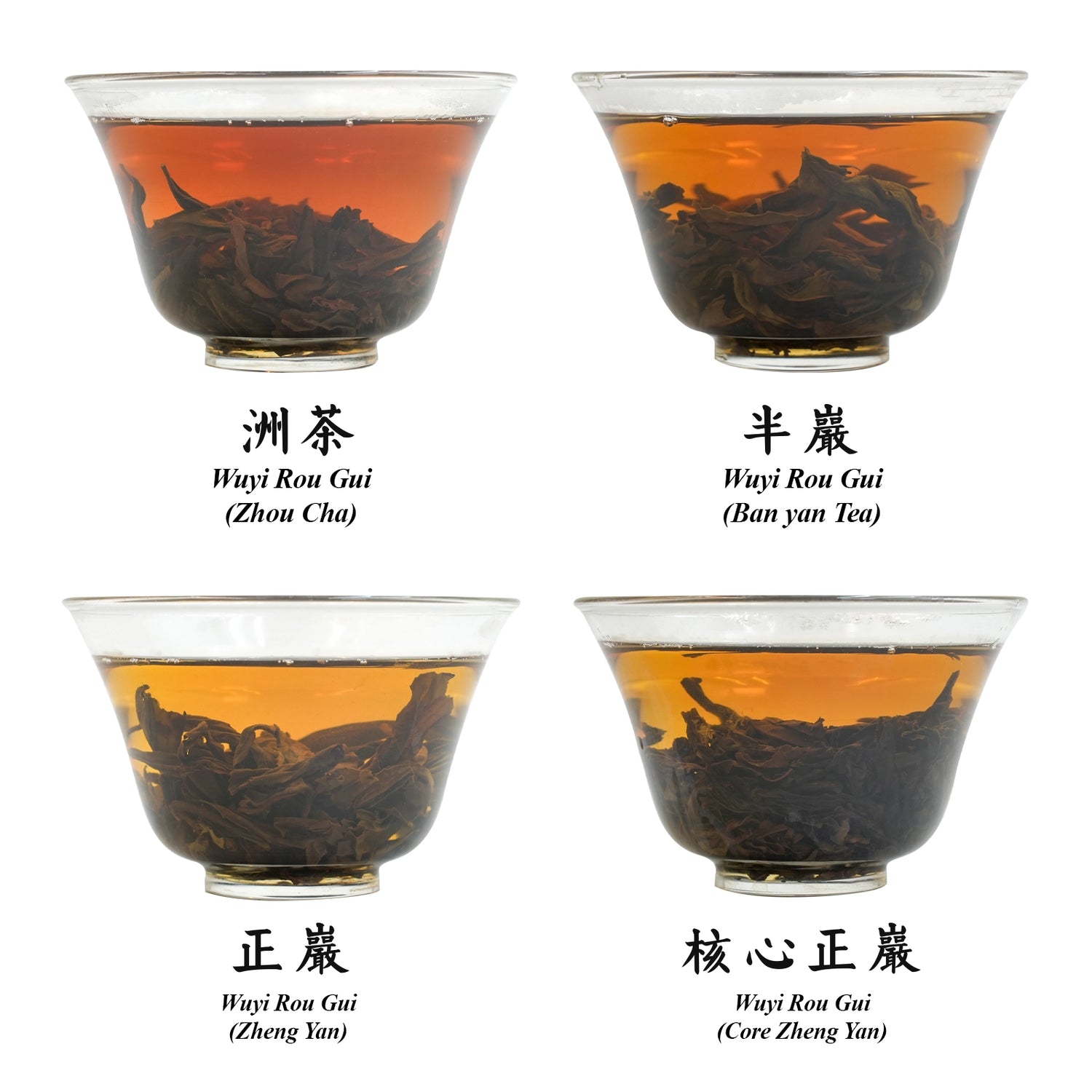
Сравнительный набор улунских чаёв с Уи: 4 типа почвы, 60 г
Сравнительный набор улунских чаёв с Уи: 4 типа почвы, 60 г
Почвенная среда
В «Классике чая» Лу Юя упоминается, что чайные деревья лучше всего растут на разных типах почв: «лучшие растут на гнилых камнях, средние на гравийной почве и худшие на желтой земле». Каменистая почва обеспечивает хороший дренаж и циркуляцию воздуха, предотвращая как заболачивание во время сильных дождей, так и сухость во время засухи. Она богата минералами, и чайные деревья процветают на почве, которая одновременно влажная и кислая. Например, лучшие скальные чаи Уи растут на почве, состоящей из гнилых камней и гравия. С другой стороны, более низкосортные чаи Уи, которые в основном растут на желтой земле, не имеют характерного каменистого привкуса и имеют более простые, менее сложные ароматы и вкусы.
Если вы хотите ощутить, как разные типы почв влияют на вкус улуна, лучшим примером будет коллекция чаёв с утеса Уишань, собранных в разных местах. Сюда входят:
Основной чай Чжэнъянь Уи: известен своей каменистой, щебнистой почвой, представленной знаменитыми Тремя ямами и Двумя ручьями (Сань Кэн Лян Цзянь).
Чай Уи Чжэнъянь: выращивается на почвах, богатых песчано-гравийными породами.
Чай Уи Бан Янь: выращивается на толстых слоях каменистой красной почвы.
Чай Уичжоу: выращивается на почвах с преобладанием лёсса (желтой земли).
В комплект входят:
- Чай Core Zhengyan Wuyi (Core Zheng Yan) 10 г
- Уи Роу Гуй (Чжэн Янь) 10г
- Wuyi Rou Gui (Чай Бан Янь) 20г
- Уи Роу Гуй (Чжоу Ча) 20г
Источник:
- Ядро Чжэн Янь: Уюань Цзянь, деревня Тяньсинь, город Уи, город Уишань, провинция Фуцзянь
- Чжэн Янь: деревня Тяньсинь, город Уи, город Уишань, провинция Фуцзянь
- Чай Бан Янь: деревня Цзиншуй, город Синцунь, город Уишань, провинция Фуцзянь, Китай.
- Чжоу Ча: город Синтянь, город Уишань, провинция Фуцзянь, Китай
Мастер купажа:
- Чэнь Хуэй
Время обработки:
- Октябрь 2024 г.
Срок годности:
- 36 месяцев
Сорт чая:
- Сорта корицы Уи
Высота:
- Ядро Чжэн Янь: 342 метра
- Чжэн Янь: 400-500 метров.
- Чай Бан Ян: около 400 метров
- Чжоу Ча: около 200 метров
Тип почвы:
- Основной материал Чжэн Янь: Гравийный грунт
- Чжэн Янь:песчано-гравийная почва
- Чай Баньян: красная почва с преобладанием толстослойных пород
- Чжоу Ча: желтая почва
Степень окисления : средняя (45-55%)
Степень обжарки:
- Основная часть Чжэн Янь: три обжарки, сильный огонь, 105-110 °C (221-230 °F)
- Чжэн Янь: три обжарки на сильном огне, 105–110 °C (221–230 °F)
- Чай Баньян: три обжарки, сильный огонь, 105-110°C (221-230°F)
- Чжоу Ча: Два обжаривания на среднем огне, около 115°C (239°F)
Метод обжарки (уголь или электричество):
- брикетирование древесного угля
Рекомендации по завариванию:
Заваривание улуна в китайском стиле
Чайная посуда: гайвань или глиняный чайник
Температура воды: 212°F (100°C)
Соотношение чая и воды: 1 г на 0,7 унции (20 мл)
Время заваривания: 15 секунд (1–3 заваривания), затем добавьте 5–10 секунд
Повторное заваривание: до 7 раз
Заваривание улуна в западном стиле
Чайная утварь: чайник, заварник или френч-пресс
Температура воды: 212°F (100°C)
Соотношение чая и воды: 1 ч. л. (2–3 г) на 8 унций (240 мл)
Время заваривания: 3 минуты
Повторное заваривание: 3 раза, каждый раз добавляя по 1 минуте.
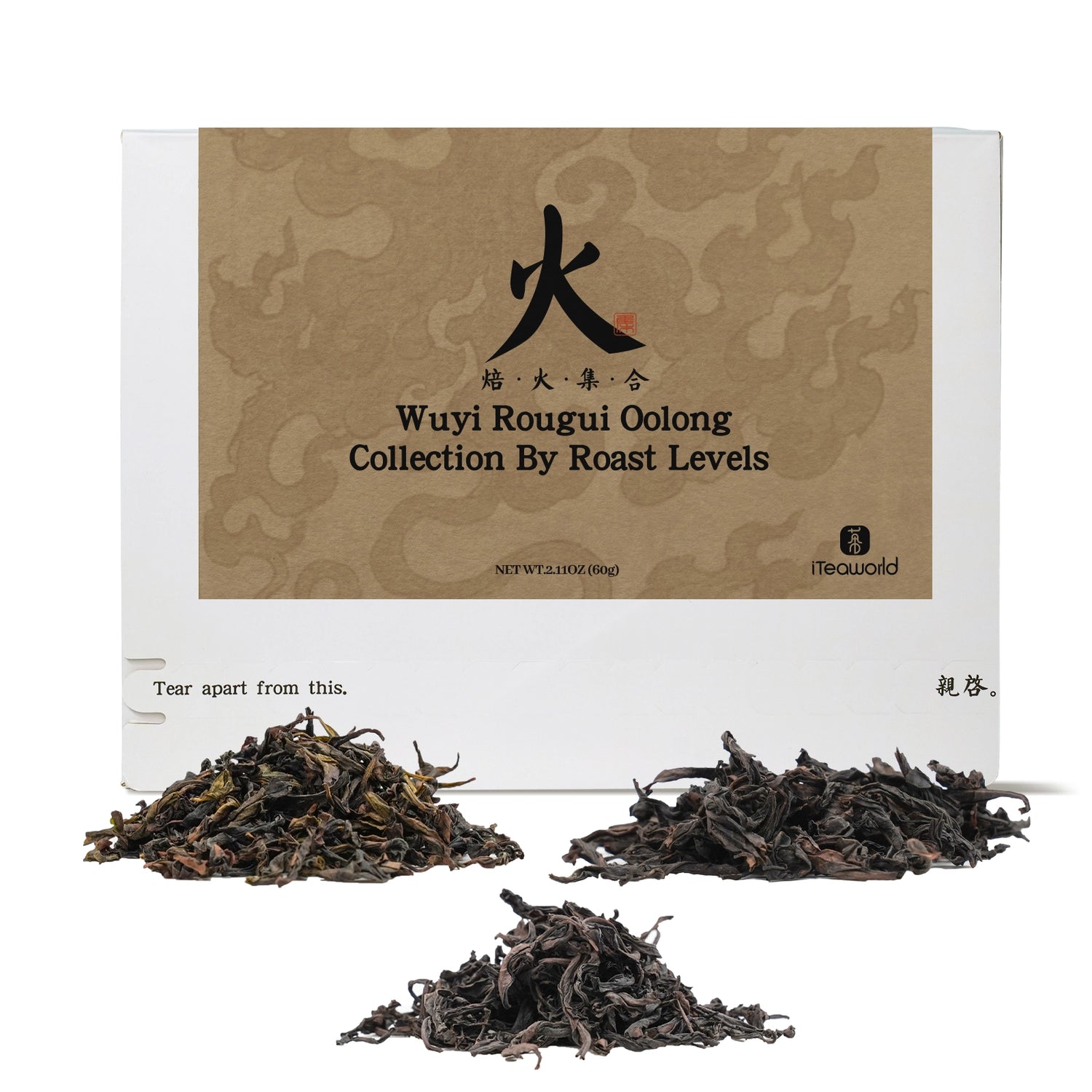
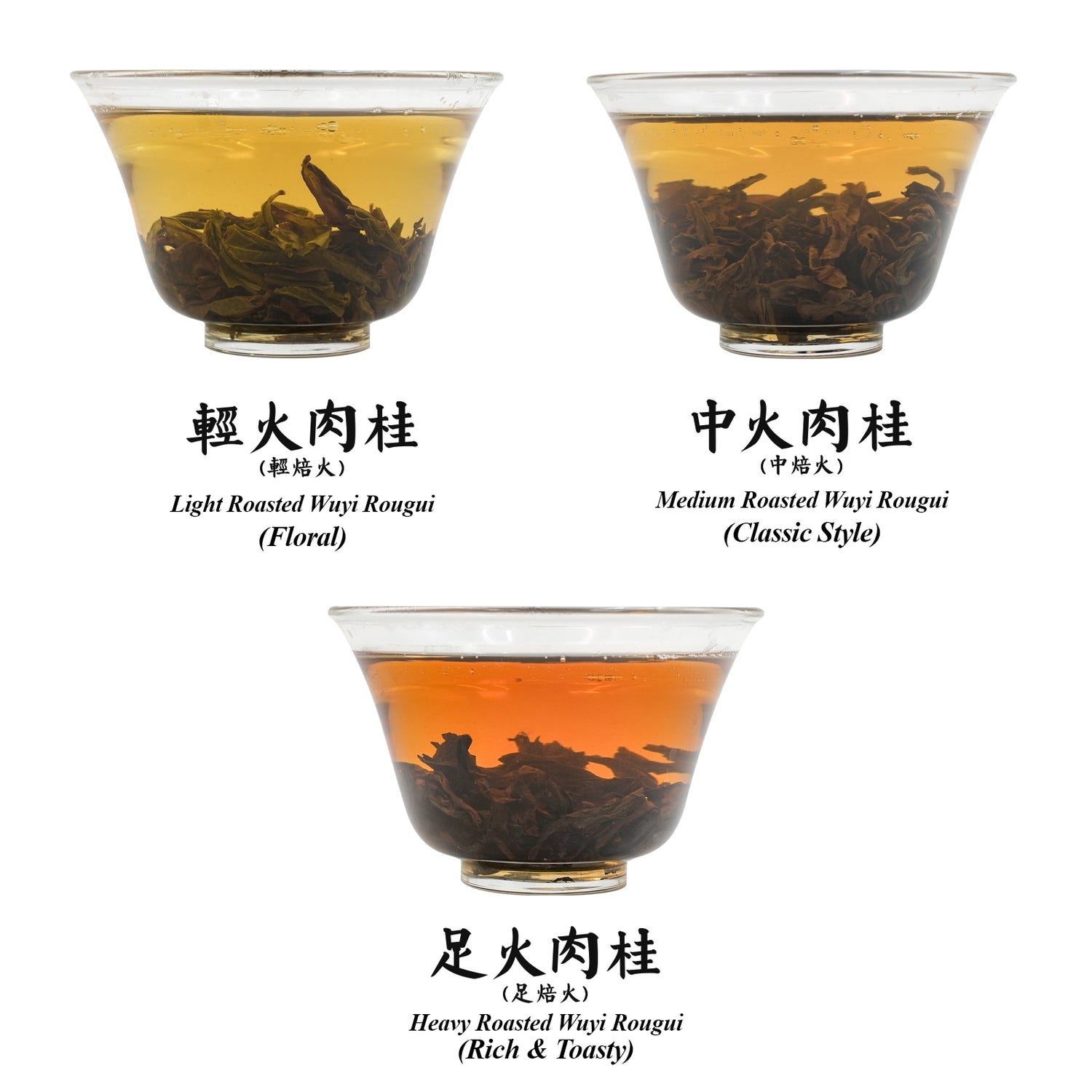
Набор для сравнения Уишаньского улуна: 3 уровня обжарки (от слабого до сильного), 60 г
Набор для сравнения Уишаньского улуна: 3 уровня обжарки (от слабого до сильного), 60 г
Искусство обжарки чая улун
Обжарка улуна преследует три основные цели: снижение влажности, удаление посторонних привкусов и снижение содержания кофеина, при этом усиливая аромат и вкус чая. Чаи с разной степенью окисления требуют разной степени обжарки. Обычно слабоокисленные чаи слегка обжаривают для усиления их вкуса. Если чай слегка окислился, но сильно обжарился, он может иметь слишком дымный привкус, часто из-за того, что окисление было проведено неправильно, а обжарка используется для его маскировки.
Степень обжарки существенно влияет на аромат и вкус чая. Легкая обжарка сохраняет свежий цветочный аромат, в то время как сильная обжарка создает более насыщенный, мягкий напиток с поджаренными или дымными оттенками.
Этот чай содержит улун Wuyi Rougui из знаменитых гор Уи в провинции Фуцзянь, созданный тем же мастером чая. Единственное отличие заключается в уровне обжарки, что дает вам прекрасную возможность изучить, как обжарка формирует вкусы чая улун.
Происхождение: деревня Цзиншуй, город Синцунь, город Уишань, провинция Фуцзянь, Китай.
Мастер купажа : Чэнь Хуэй
Время обработки: ноябрь 2024 г.
Срок годности: 24 месяца
Сорт чая: Уишаньский коричный
Высота: около 400 метров
Тип почвы: гравийная почва
Степень окисления: Окисление 45-55%
Уровень обжарки: одинарная обжарка: легкая обжарка, 90–100 °C (194–212 °F)
Тройная обжарка: средняя обжарка, 105–115 °C (221–239 °F)
Тройная обжарка (полный огонь): сильная обжарка, 120–130 °C (248–266 °F)
Метод обжарки (уголь или электричество):
Светлая корица: электрическая обжарка 20 г
Корица средней интенсивности: брикетирование древесного угля 20 г
Full Flame Cinnamon: брикетированный древесный уголь 20 г
Рекомендации по завариванию:
Заваривание улуна в китайском стиле
Чайная утварь: гайвань или глиняный чайник.
Температура воды: 212°F (100°C)
Соотношение чая и воды: 1 г на 0,7 унции (20 мл)
Время заваривания: 10-15 сек (1-3 заваривания), добавить 5-10 сек после
Повторное заваривание: до 7 раз
Заваривание улуна в западном стиле
Чайная утварь: чайник, заварник или френч-пресс.
Температура воды: 190-200°F (88-93°C)
Соотношение чая и воды: 1 ч. л. (2-3 г) на 8 унций (240 мл)
Время заваривания: 3-5 минут
Повторное заваривание: до 3 раз, каждый раз добавляя по 1-2 минуты.
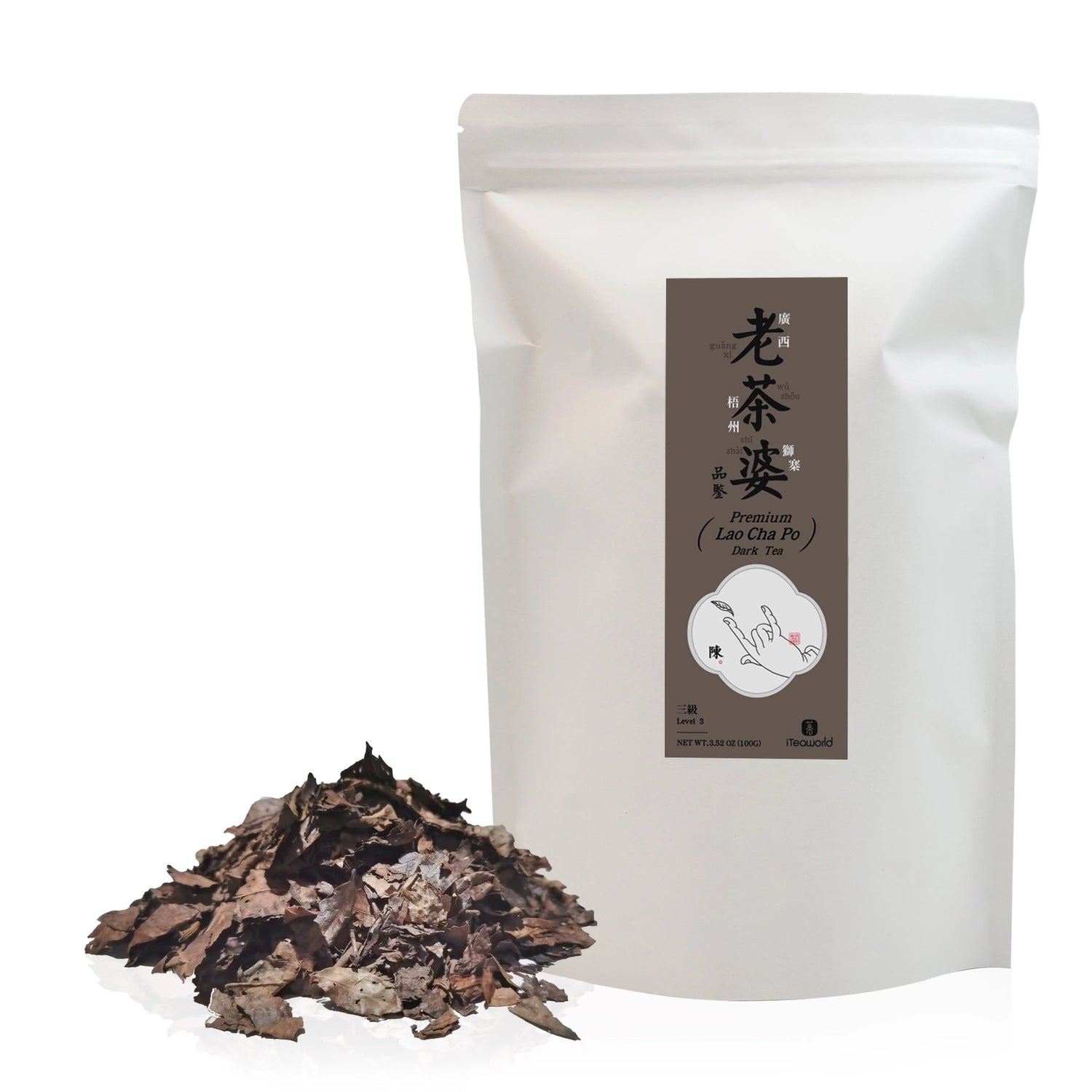
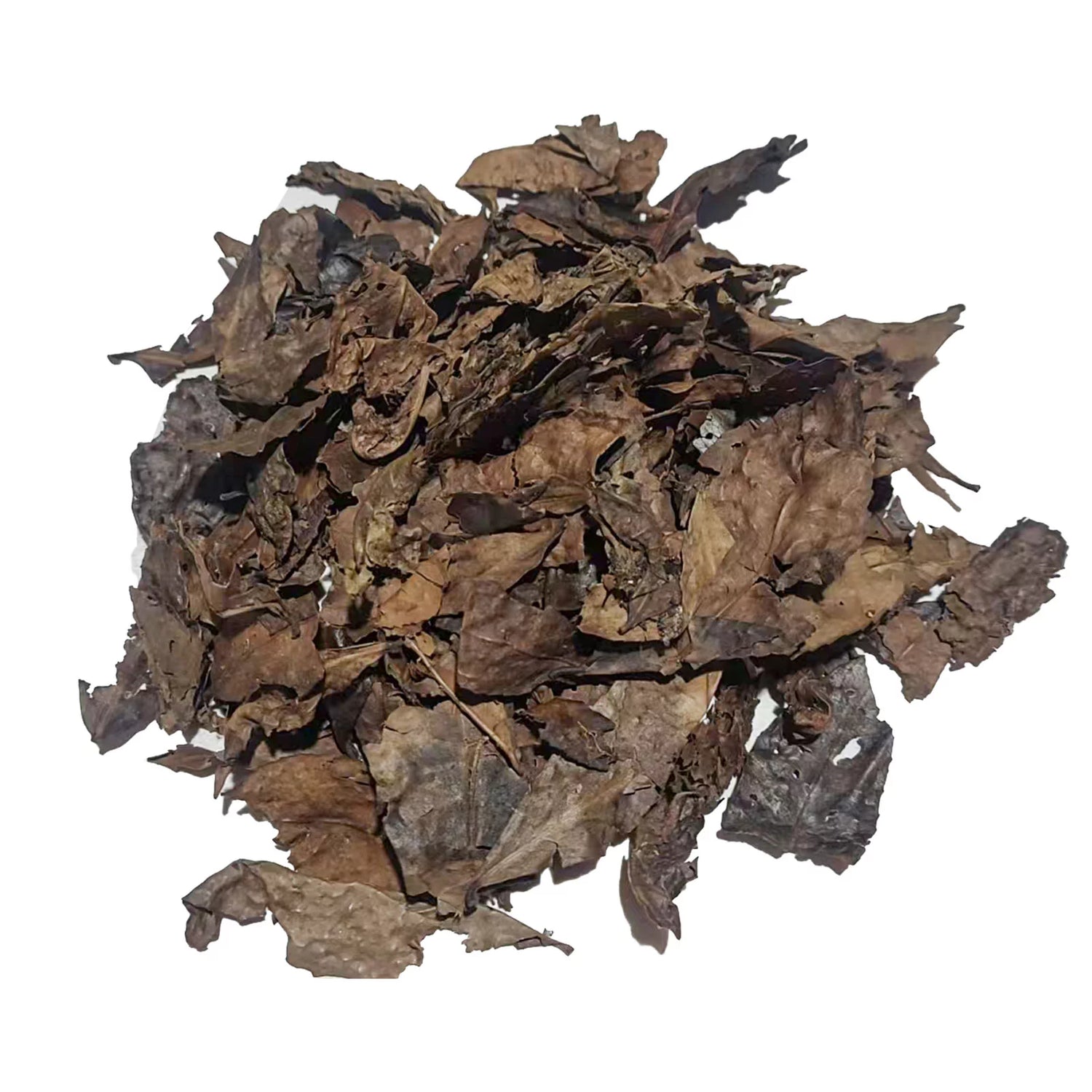
Lao Cha Po Liubao Dark Tea – Aged 2010, Wild Old Trees, Smooth & Sweet
Lao Cha Po Liubao Dark Tea – Aged 2010, Wild Old Trees, Smooth & Sweet
“Lao Cha Po” specifically refers to old leaves (not tender buds) harvested one week before and after Shuangjiang (one of China’s 24 solar terms, around October 23, marking the start of colder weather). These are mostly coarse leaves from the current year or 2–3-year-old growth. “Cha Po” is the Liubao people’s respectful name for old leaves. In the past, farmers sold tender buds as high-quality tea, while coarse old leaves were kept as everyday tea. The name reflects the farmers’ wisdom of “making full use of what you have.”
Around Shuangjiang, large temperature differences and reduced rainfall make the old leaves thicker and richer in sugars and nutrients, giving the tea a natural cane sugar sweetness. Tea harvested at this time has less astringency and a smoother, naturally sweet taste.
This Lao Cha Po tea was brewed at the tea bar during the 15th Northwest Tea Festival and loved by everyone, receiving high praise.
This tea is made using the traditional Liubao “picking and cleaning old leaves” method: fresh leaves are briefly blanched in hot water, then sun-dried or air-dried. Blanching reduces bitterness, while the drying process, similar to white tea, preserves most of the tea’s natural compounds.
This batch of Lao Cha Po comes from wild, aged tea trees in Shizhai Town, Wuzhou City, with tree ages of 30–50 years, making the raw material rare. Because it uses old trees, even with only 20 years of aging, the tea exhibits flavor comparable to 30+ years aged tea. The tea has a distinct medicinal aroma and carries the forest-like character unique to old trees, offering a rich and unique flavor.
Рекомендуемая покупка :
Этот чай Те Гуань Инь Улун, произведенный между 1990 и 1993 годами, хранился на сухом складе старой чайной фабрики более тридцати лет и был запечатан. Он изготовлен из сорта Те Гуань Инь из знаменитого чаеводческого региона Юнчунь, провинция Фуцзянь, и был изготовлен государственной фабрикой Yongchun Kong Overseas Chinese Tea Factory, основанной в 1958 году. Этот чай полностью изготовлен вручную, традиционно обжарен на сильном огне и поставляется в оригинальной упаковке. Больше не продается на рынке, его уникальный «выдержанный аромат», насыщенная сладость и гладкая текстура делают его ценным выбором для ценителей выдержанного чая улун.
Основные сведения о Тегуаньинь:
- Дата производства : 1990-1993
- Класс: Первый класс
- Сорт чая : Тегуаньинь
- Мастерство : Этот чай традиционно обжаривается на полном огне и умеренно окисляется. После более чем тридцати лет естественной выдержки в сухой среде хранения он запечатывается во внешнюю бумажную коробку и упаковывается во внутренний крафт-бумажный пакет.
- Вкусовые особенности : Этот чай обладает богатым, выдержанным ароматом с оттенками древесных нот. Текстура густая и гладкая, с глубоким, мягким вкусом и длительным сладким послевкусием. Его сложный профиль раскрывается слоями, что делает его по-настоящему изысканным опытом.
Что такое чай Тегуаньинь Улун? :
Tieguanyin — один из десяти самых известных чаев Китая, полуферментированный улун, в основном производимый в Аньси, провинция Фуцзянь. Его уникальный процесс производства включает в себя завяливание на солнце, встряхивание и нагревание, что придает листьям характерный вид «зеленого листа с красными краями». Чай отличается плотно скрученными песчано-зелеными листьями и золотистым прозрачным настоем. Он имеет насыщенный, стойкий аромат с натуральными нотами орхидеи или фруктов, мягкий, освежающий вкус и сладкое послевкусие. Tieguanyin, обладающий высокой устойчивостью к многократным завариваниям, наполнен питательными веществами, такими как полифенолы и аминокислоты, предлагая такие преимущества, как повышение бдительности, снижение усталости, охлаждение тела и помощь в потере веса. Этот ценный чай и символ чайной культуры Южной Фуцзянь широко любим любителями чая.
Советы по завариванию и наслаждению:
Этот чай демонстрирует уникальную трансформацию, которую приносит время. Первое заваривание можно использовать как шаг «пробуждения чая», чтобы активировать внутренние качества чая, что приводит к более богатой, гладкой текстуре и более выраженному сладкому послевкусию. Для лучшего опыта мы рекомендуем использовать более длительное время заваривания или методы кипячения, чтобы полностью раскрыть его выдержанные характеристики.
Рекомендуемые методы заваривания:
-
Гайвань Пивоварение
- Емкость : 100 мл Гайвань
- Температура воды : 95 ℃ -100 ℃
- Время заваривания : 5-7 раз
- Соотношение чая и воды : от 1:15 до 1:25
- Время заваривания Один раз : 10 ~20 секунд
-
Термос для заваривания
- 1 г чая на 100 мл (3,4 унции) воды.
- Используйте кипящую воду (212°F).
- Время настаивания: 1-2 часа.
- Инструмент: Изолированный термос.
-
Метод кипячения
- Добавьте 1 г чая на 100 мл (3,4 жидких унции) воды.
- Кипятите 1–2 минуты, затем дайте постоять 2–3 минуты.
- Повторно заваривайте, кипятя на 3 минуты дольше с каждым завариванием.
- Для оптимального вкуса используйте керамический или стеклянный чайник.
- Наслаждайтесь 3–4 порциями кофе.
Правила хранения:
Чтобы обеспечить наилучшее качество чая, идеальный способ хранения — хранить его в вакуумной упаковке в прохладном, темном и сухом месте. Избегайте воздействия сильных запахов и воздуха. Для герметичного хранения рекомендуется использовать жестяную банку или металлическую банку с двойной крышкой. Для еще лучшего результата вы можете хранить герметично закрытый чай в холодильнике или сухом контейнере для хранения.
Вес и упаковка
- Вес: 3,5 унции ( 100 г)
- Тип упаковки : Запечатанная бумажная коробка с упаковкой из коровьей кожи внутри
О зарубежной китайской чайной фабрике Yongchun Beikeng:
Основанная в 1958 году государственная фабрика чая Fujian Yongchun Beikeng Overseas Chinese Tea Factory имеет богатую историю и культурное наследие производства чая. На пике своего развития фабрика была оживленным центром инноваций и мастерства, на ней работало более 1000 рабочих чайной отрасли, и ежегодно производились миллионы фунтов чая. Ее чаи, включая Tieguanyin, экспортировались в Гонконг, Тайвань, Японию и Юго-Восточную Азию, заслужив широкое признание и став ярким символом чайной культуры Фуцзянь.
Однако к 1990-м годам фабрика пришла в упадок, а ее некогда оживленные земли затихли. Не в силах вынести, как угасает дело его жизни, ветеран-директор фабрики Хуан Шэнхоу взял на себя управление после ее приватизации, посвятив себя возрождению фабрики и сохранению ее чайного наследия.
Сегодня выдержанный Тегуаньинь фабрики не только воплощает в себе десятилетия опыта в изготовлении чая, но и продолжает демонстрировать непреходящее очарование Тегуаньинь из Юнчуня. История фабрики заграничного китайского чая Фуцзянь Юнчунь Бэйкэн отражает преданность и новаторство поколений мастеров чайного дела, а ее выдержанный Тегуаньинь продолжает это замечательное наследие.
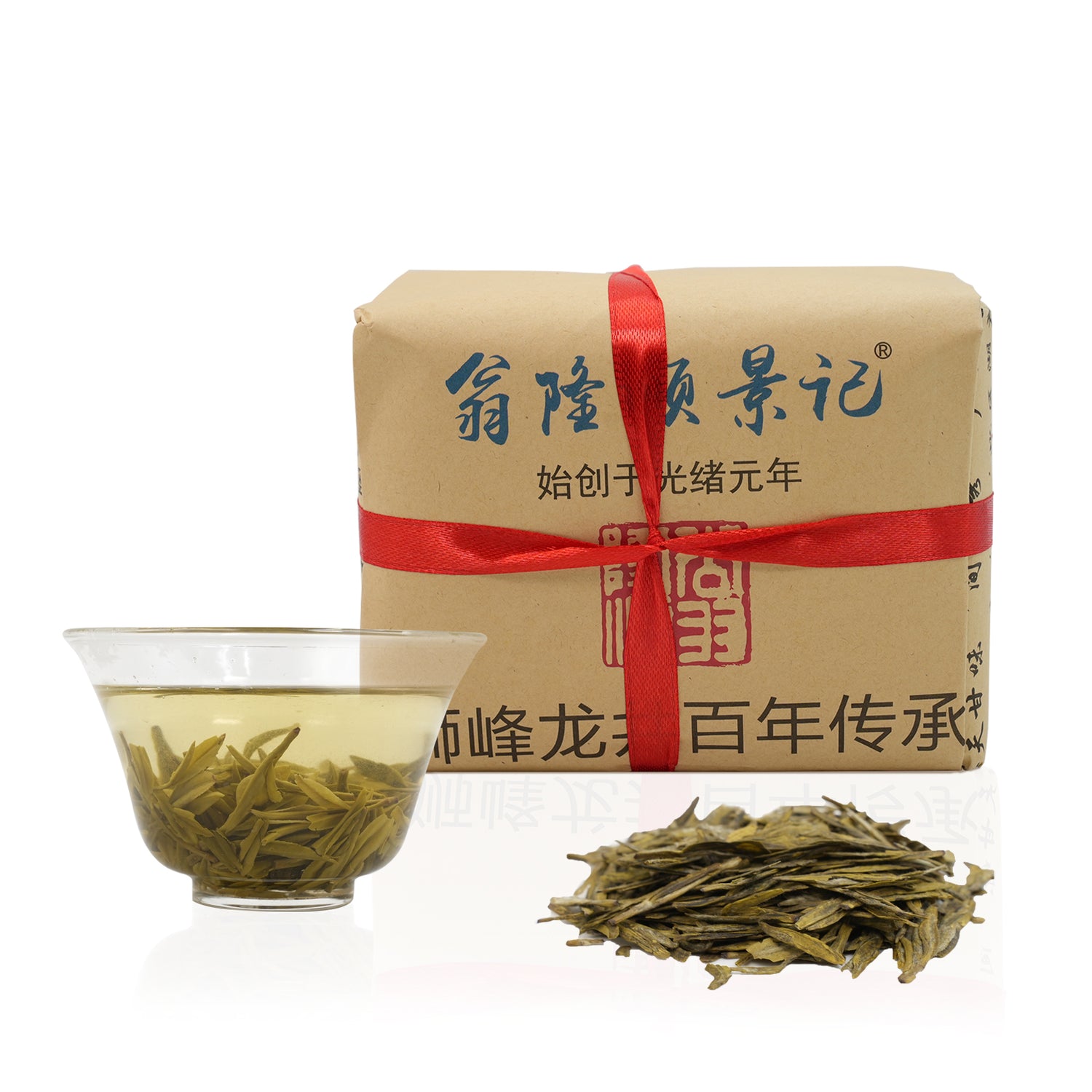
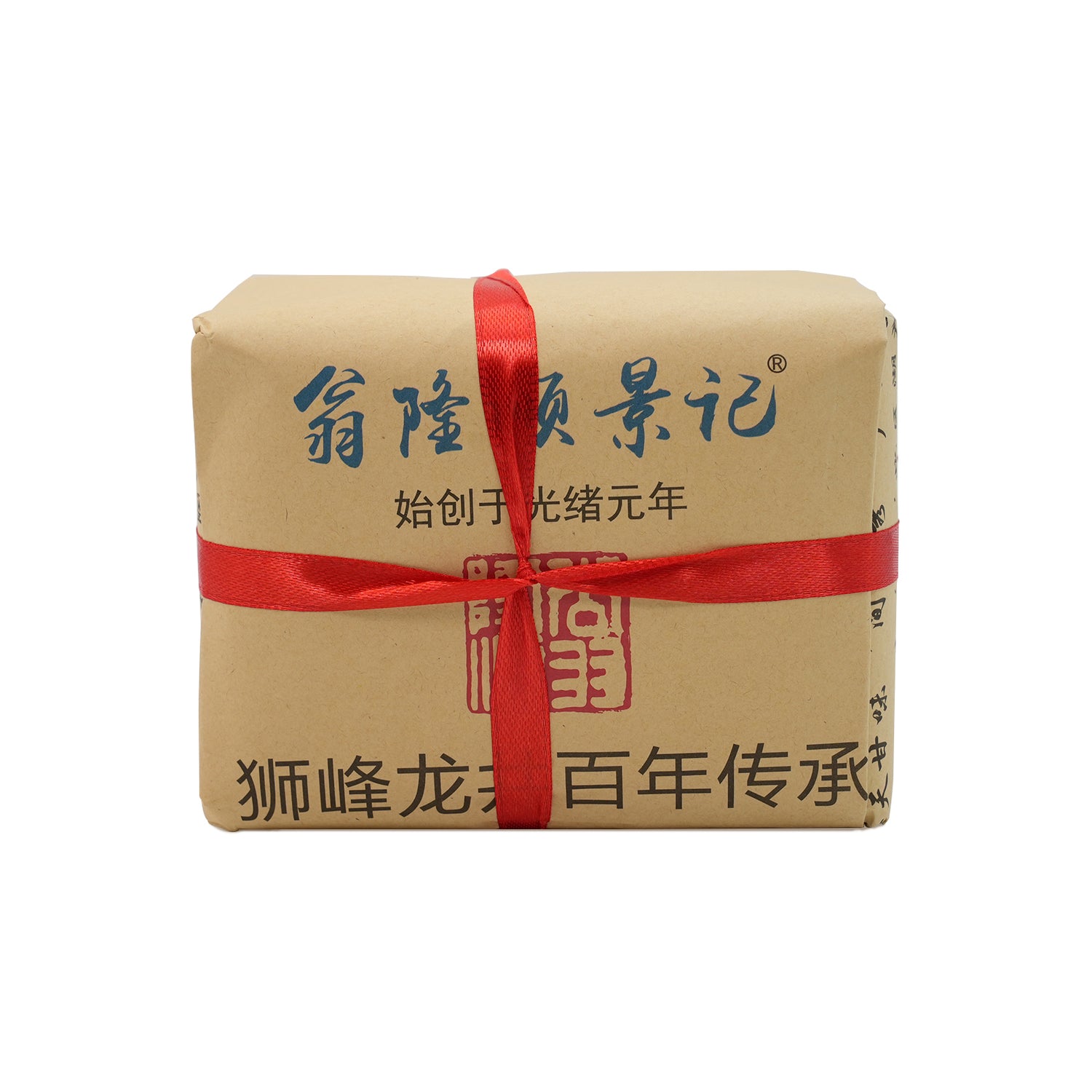
Лучший зеленый чай - Master Heritage Longjing 250 г
Лучший зеленый чай - Master Heritage Longjing 250 г
В Китае чай Лунцзин высшего качества поставляется исключительно из основного района производства Западного озера, из самых аутентичных сортов, которые в идеале собираются ранней весной в виде верхушек почек или одной почки и одного листа, что считается лучшим сортом Лунцзин.
Этот продукт входит в число лучших чаев Лунцзин. Мы получили его от наследника нематериального культурного наследия Лунцзин, мастера Вэнг Ливэня, чайного мастера из вековой чайной плантации Вэнцзяшань и национального первоклассного оценщика чая. Этот преддождевой Лунцзин собран и обжарен вручную Мастером Вэнгом, с сортом Лунцзин № 43. Это чай Лунцзин ручной работы, собранный в начале марта 2024 года. Для тех, кто хочет попробовать подлинный, первоклассный Западный озеро Лунцзин, созданный мастером, этот чай обязателен к употреблению.
Вен Ливэнь
Вэн Ливэнь является наследником вековой чайной плантации Weng Longshun Jingji в Вэнцзясане, основном районе производства Shifeng Longjing, а также национальным первоклассным оценщиком чая.
Он тесно связан с мастерством изготовления чая Западного озера Лунцзин и является одним из наследников этого традиционного ремесла. Вэн Ливэнь имеет большой опыт в изготовлении чая; он не только лично участвует в сборе и обжаривании чайных листьев, но и стремится обучать и продвигать это ремесло, чтобы гарантировать сохранение традиционного вкуса чая Западного озера Лунцзин.
Вэн Ливэнь уделяет особое внимание ручной обжарке чайных листьев в процессе приготовления чая. Он считает, что вкус и качество чая, обжаренного вручную, намного превосходят чай, приготовленный машинным способом. Он подчеркивает, что каждый шаг требует от чайного мастера использования пяти чувств, а взгляд чайного мастера, его суждение и тепло его рук во время ручного процесса приготовления чая незаменимы. Вэн Ливэнь также упомянул, что хотя машинная обжарка является тенденцией в производстве чая Лунцзин, чай, приготовленный вручную, по-прежнему имеет свою уникальную ценность и значение.
Вэн Ливэнь говорит: «У каждого чаедела свои собственные методы и критерии оценки. Лично я считаю, что «без цветочного аромата это не Лунцзин». Хотя цветочный аромат, особенно аромат орхидеи, который мы ищем, — это то, с чем можно столкнуться, но не искать.


Chinese Style Hand-Embroidered Fish Coasters – Set of 4 Elegant Tea Cup Mats
Chinese Style Hand-Embroidered Fish Coasters – Set of 4 Elegant Tea Cup Mats
The coasters are mainly made of cloth, designed to prevent cups and Yixing teapots from bumping against the table. When you place the cup back, it makes little to no sound, creating a softer and quieter tea-drinking atmosphere.
The fabric is absorbent, allowing you to easily wipe off any water or tea stains from the teapot or cup, keeping the table clean and dry. Most coasters and mats also feature elegant patterns or unique shapes, making them lovely decorative pieces for a tea table or tearoom.
Sizes:
Hand-embroidered Coaster – Fish: 9.5 × 9.5 cm
*All sizes are measured by hand, and a margin of error of ±1 cm may occur.


Chinese Style Hand-Painted Tea Mat – Oriental Aesthetic Teaware Table Mat
Chinese Style Hand-Painted Tea Mat – Oriental Aesthetic Teaware Table Mat
As an essential decoration on the tea table, a tea mat helps organize teaware such as teapots and cups, bringing them together into a harmonious setting. It sets the tone for the tea experience—whether tranquil, elegant, or lively. Placed on the table, it also helps prevent direct contact between teaware and the surface, offering cushioning and anti-slip protection.
The tea towel, usually square or rectangular, is an important cleaning tool during tea preparation. It’s used to wipe the teapot, teacups, or any water stains on the tea mat, keeping the tea space neat and graceful
We offer a variety of styles and colors for both tea mats and tea towels. Each design—whether hand-painted or hand-embroidered—is carefully crafted with attention to detail.
Sizes:
Hand-painted Tea Mat – Lotus Pod Design: 49 × 29 cm
Hand-painted Tea Mat – Butterfly & Flower Design: 49 × 29 cm
Hand-painted Tea Mat – Free Spirit Landscape Design: 49 × 29 cm
Hand-painted Tea Mat – Fish & Lotus Design: 49 × 29 cm
*All sizes are measured by hand, and a margin of error of ±1 cm may occur.
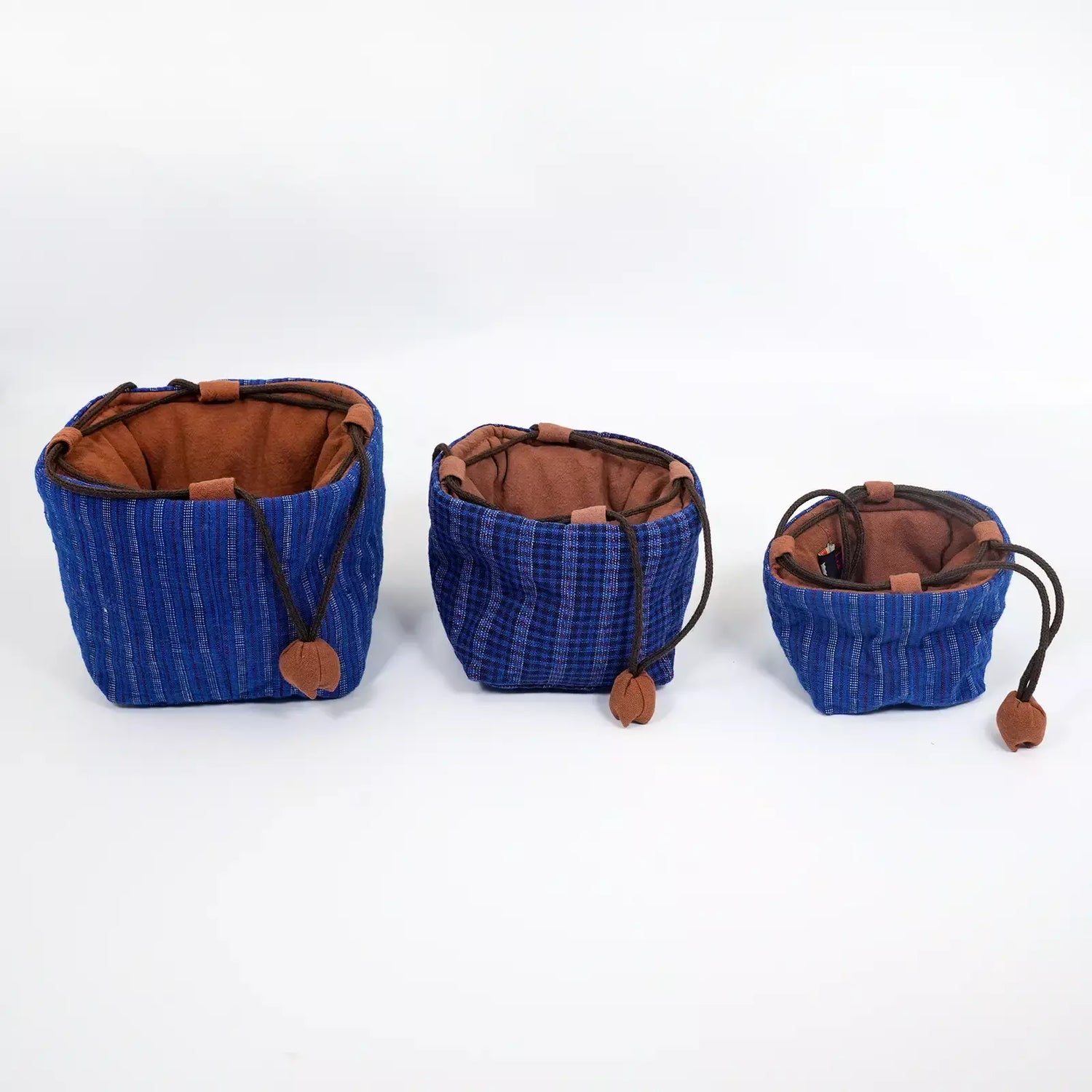
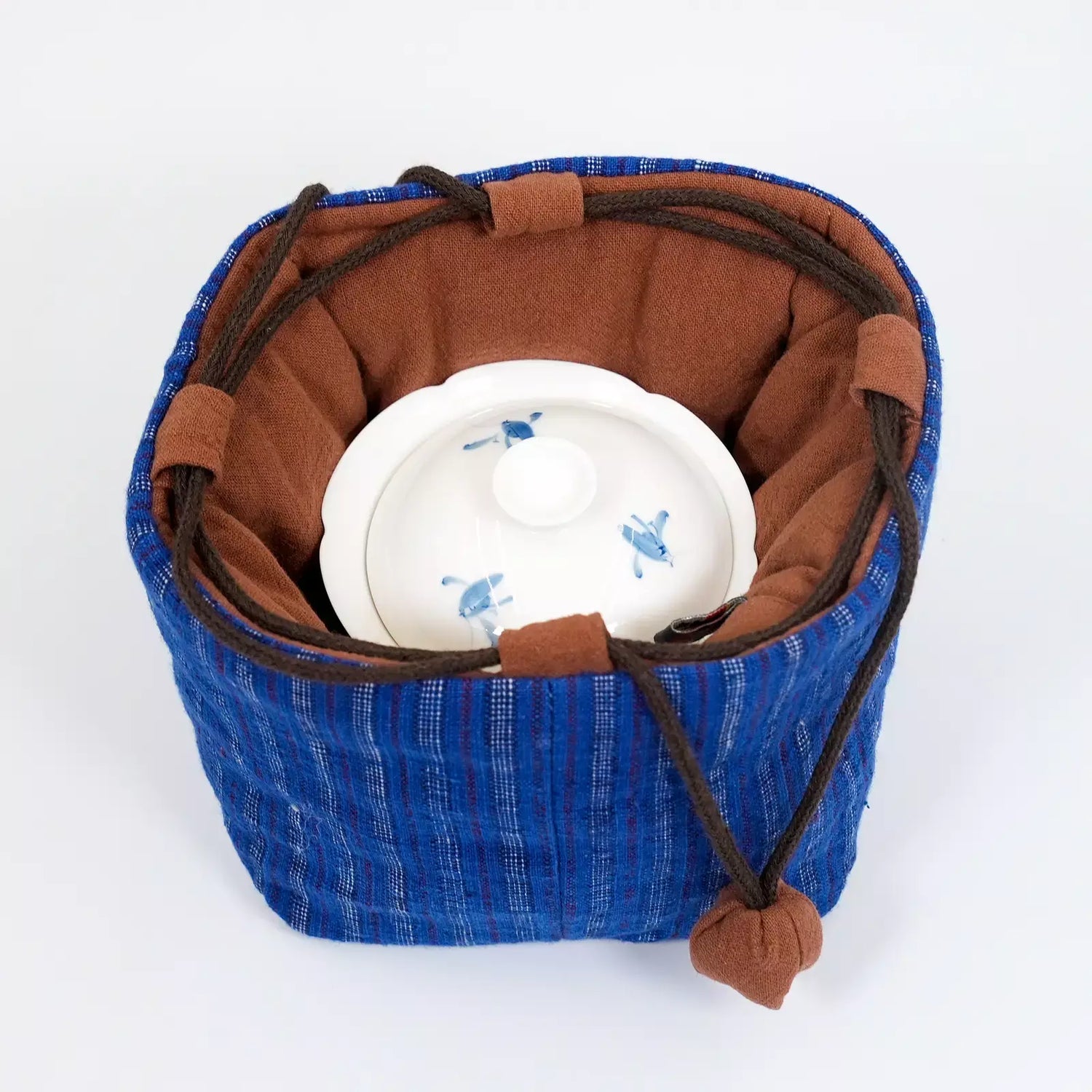
Padded Teaware Bag Sets – Protective Travel Bags for Teapots and Cups
Padded Teaware Bag Sets – Protective Travel Bags for Teapots and Cups
These teacup and teapot bag sets are specially designed to protect your teaware. Each bag is lined with soft padding that provides full cushioning and protection for teapots and cups, preventing damage from accidental bumps during handling or storage.
The sets can easily store a complete compact tea set (teapot and cups), with separate compartments for each piece to keep them secure and organized.
Available in multiple designs, these teaware bags are perfect for both home storage and travel, offering reliable protection for your favorite teapot or teacup wherever you go.
Sizes:
Teapot & Cup Bag Set (Rough Cotton / Abstract Landscape):
Large: 10 cm (L) × 10 cm (W) × 10 cm (H)
Medium: 9 cm (L) × 9 cm (W) × 9 cm (H)
Small: 7 cm (L) × 7 cm (W) × 7 cm (H)
One Teapot Fair Cup Multiple Cups Bag Set: 17 cm (L) × 13 cm (W) × 10.5 cm (H)
Lantern Bag: Round base diameter 15 cm × height 11.5 cm
One Teapot One Cup Bag Set: 14.5 cm (L) × 9 cm (W) × 9 cm (H)
*All sizes are measured by hand, and a margin of error of ±1 cm may occur.
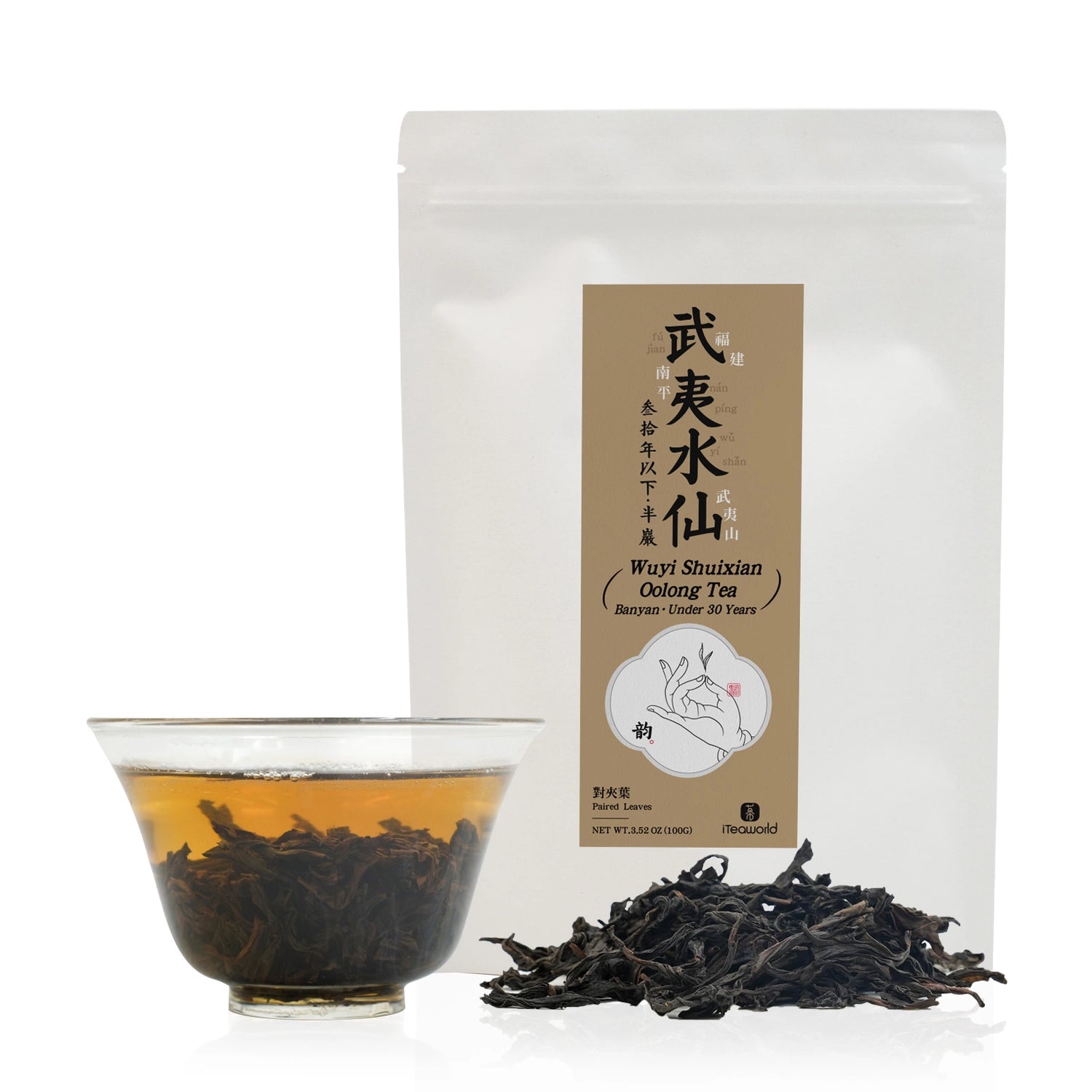
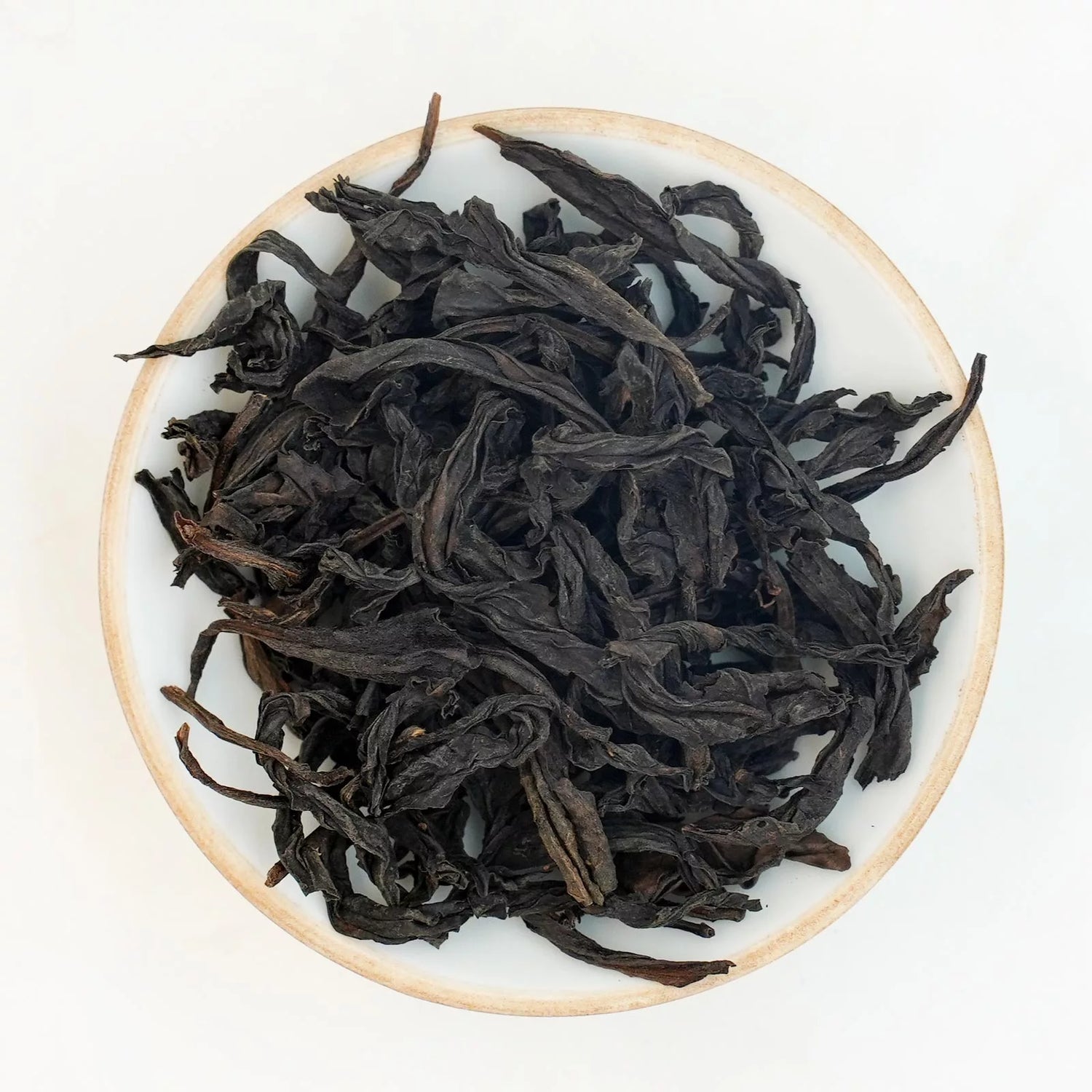
Premium Wuyi Rock Tea Wuyi Shui Xian (Ban Yan, Under 30 Years)
Premium Wuyi Rock Tea Wuyi Shui Xian (Ban Yan, Under 30 Years)
Wuyi Shui Xian is one of the signature varieties of Wuyi Rock Tea. Alongside Rou Gui, it is known by the saying: “For mellow taste, none surpasses Shui Xian; for fragrance, none surpasses Rou Gui.” Originating from Jianyang during the Qing Dynasty, Shui Xian was later introduced to Wuyi Mountain.
The age of the tea trees plays a crucial role in Shui Xian’s character. As the trees grow older, the liquor becomes more mellow, bitterness and astringency decrease, and the flavor complexity increases.
This particular Shui Xian comes from within the Wuyi Mountain Scenic Area. It belongs to the Ban Yan (mid-mountain) category, harvested from tea bushes under 30 years old (newer growth). Crafted using traditional Wuyi Rock Tea techniques, it delivers a fresh, smooth, and sweet taste. The mineral character (Yan Yun, or “rock rhyme”) is notable, with orchid fragrance as the dominant note, complemented by hints of bamboo or zongye (bamboo leaf) aroma. The tea has no heavy roasted flavor, offers 6–8 enjoyable infusions, and is an excellent choice for tea lovers wishing to further explore the world of Wuyi Rock Tea.
Origin: Jingshui Village, Xingcun Town, Wuyishan City, Fujian Province, China
Tree Age: Under 30 years
Category: Ban Yan (mid-mountain)
Soil: Gravel soil
Variety: Wuyi Shui Xian
Producer: Chen Hui
Harvest Time: November 2024
Storage Life: 36 months
Ruixiang 305, developed by the Fujian Academy of Agricultural Sciences in 2003 from Huangdan hybrids, is one of the representative high-aroma varieties of modern Wuyi Rock Tea. It is commonly used in blends with Da Hong Pao and Wuyi Rougui to enhance aroma complexity and flavor depth.
This Ruixiang tea is processed using traditional Wuyi Rock Tea techniques. The natural gardenia-like aroma of the tea leaves is perfectly balanced with the roasted notes from charcoal firing. The fragrance is rich and long-lasting, with a pronounced cup-bottom aroma. The taste is mellow and smooth, with a lingering sweetness and layered complexity. Compared to Wuyi Rougui, it offers a fresher, more refreshing mouthfeel.
Origin:
Jingshui Village, Xingcun Town, Wuyishan City, Fujian Province, China
Tea Region:
Ban Yan
Tea Variety:
Ruixiang 305
Tea Master:
Chen Hui
Harvest Season:
November 2024
Shelf Life:
36 months
Brewing Guidelines
Water Temp: 100°C (212°F)
Brewware: Gaiwan, Yixing Clay Teapot
Tea-to-Water Ratio: 5-7g per 100ml
1–3 infusions: 8-15 sec
Later infusions: Add 5–10 sec
Total brews: 10 times


Премиальный Линтоу Даньцун (Медовая орхидея) Медово-сладкий улун на каждый день 100 г 2025 г.
Премиальный Линтоу Даньцун (Медовая орхидея) Медово-сладкий улун на каждый день 100 г 2025 г.
Линтоу Даньцун | Медово-сладкий улун на каждый день
Мягкий, доступный и невероятно приятный на вкус улун с длительным медовым привкусом — идеальный для ежедневного чаепития и послеобеденного чаепития.
Если вы ищете «универсальный» чай, который легко полюбить, который прекрасно сочетается с десертами и отличается стабильным качеством, но при этом не грабит ваш кошелек , то Линтоу Даньцун — это именно то, что вам нужно. Известный своим мягким медовым вкусом и исключительной ценностью, этот чай может стать следующим «сладким символом» китайского чая после жасмина.
Подробности о чае
-
Сорт: Бай Е Данцун (Белолистный Данцун).
-
Урожай: весна 2025 г.
-
Происхождение: деревня Линтоу, город Фубин, округ Раопин, Чаочжоу, Гуандун.
-
Высота: 500–700 м
-
Возраст дерева: менее 30 лет
-
Жарка: традиционная обжарка на углях
Почему вам стоит это попробовать
-
Любите сладкий чай? Его насыщенный медовый вкус может посоперничать с большинством улунов и даже с некоторыми чёрными чаями.
-
Ищете выгодное предложение? Это один из самых доступных, но при этом очень вкусных улунов Данцун.
-
Хотите изучить разнообразие гуандунских улунов? Линтоу — классический чай, но он не входит в более известную систему «Феникс Данцун».
Происхождение и история: сладость, рождённая в горах
Чай Линтоу Даньцун, также известный как Бай Е Даньцун (Белолистный Даньцун) , произрастает в деревне Линтоу уезда Жаопин города Чаочжоу провинции Гуандун. Впервые он был выращен в 1961 году из диких деревьев Феникс Шуйсянь и теперь занимает более 50% площади чайных плантаций в Гуандуне .
-
Сорт: Небольшое дерево, крупнолистный тип
-
Высота: 500–700 м
-
Почва: горная красная глина с хорошим дренажем
-
Климат: теплый, туманный, идеальный для развития цветочных и медовых ароматов.
Профиль вкуса: насыщенный медовый, мягкий цветочный, легко полюбить
Линтоу Даньцун предлагает яркий золотистый настой с насыщенным цветочным ароматом и характерным «ми юнь» (медовым привкусом) — характерной нотой, которую ценят любители чая из Чаочжоу. Это:
-
Сладкий и мягкий, никогда не горький
-
Средней плотности тело, с длительным послевкусием
-
Отлично сочетается с выпечкой, фруктами или просто для спокойного вечера.
Сравнение вкусов:
-
Lingtou Mi Lan Xiang (Медовая орхидея): подчеркивает медовые и тонкие цветочные ноты.
-
Phoenix Mi Lan Xiang: подчеркивает орхидею с более легким медовым оттенком
«Сладкий, как мед, чай, который можно пить каждый день и который никогда не надоест».
Рекомендации по завариванию
Стиль Гунфу:
-
5г на 100мл гайвани
-
вода 95-100°C
-
Быстро промыть, затем настаивать 6–8 раз, начиная с 10 секунд.
Западное пивоварение:
-
2 г на 200 мл
-
Заваривайте при температуре 95–100 °C в течение 1–3 минут.
-
Можно заваривать повторно 2–3 раза
-
Recently viewed products
Chat with fellow tea lovers, ask questions, and share your tea moments.
Chat with fellow tea lovers, ask questions, and share your tea moments.





